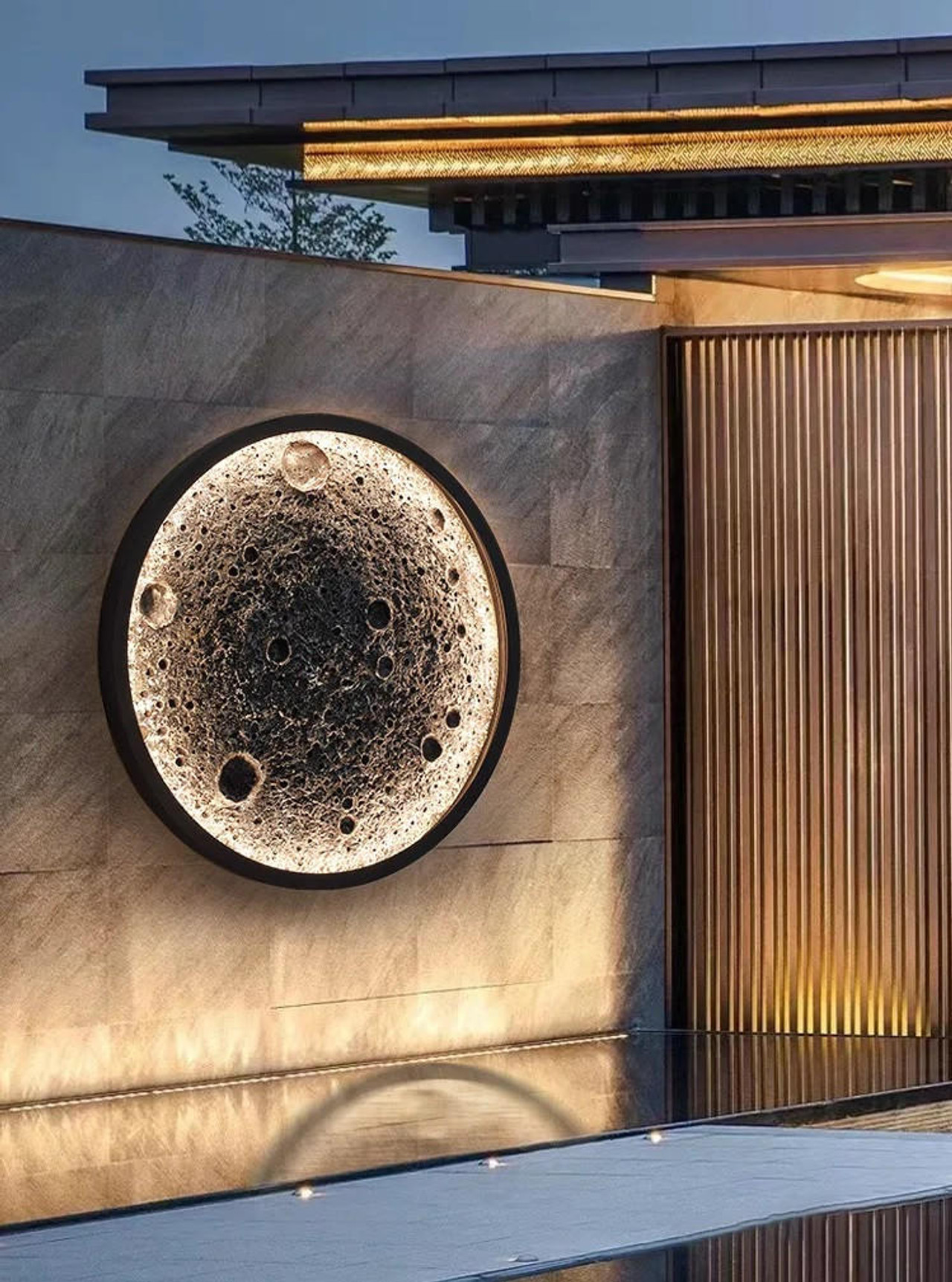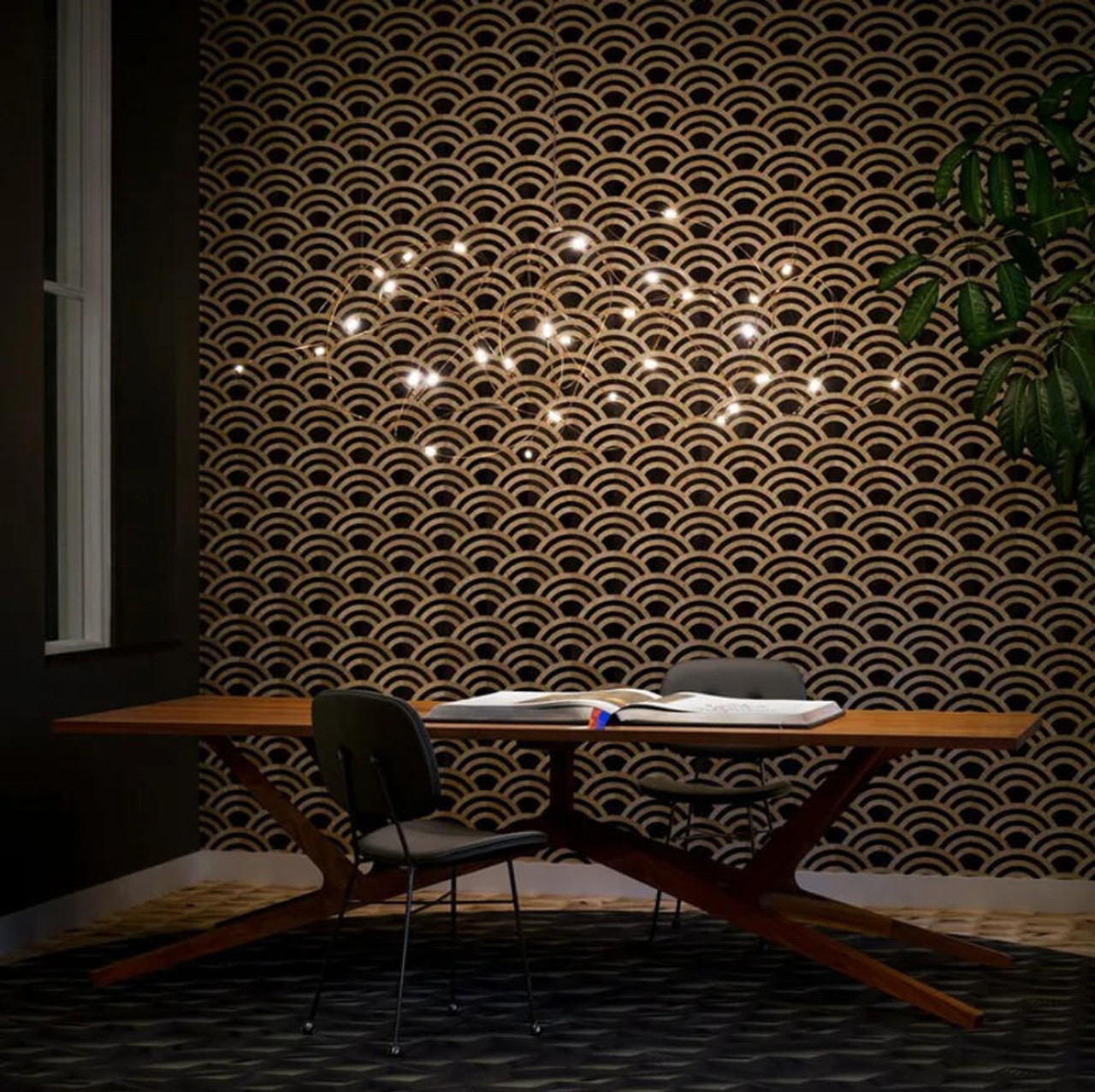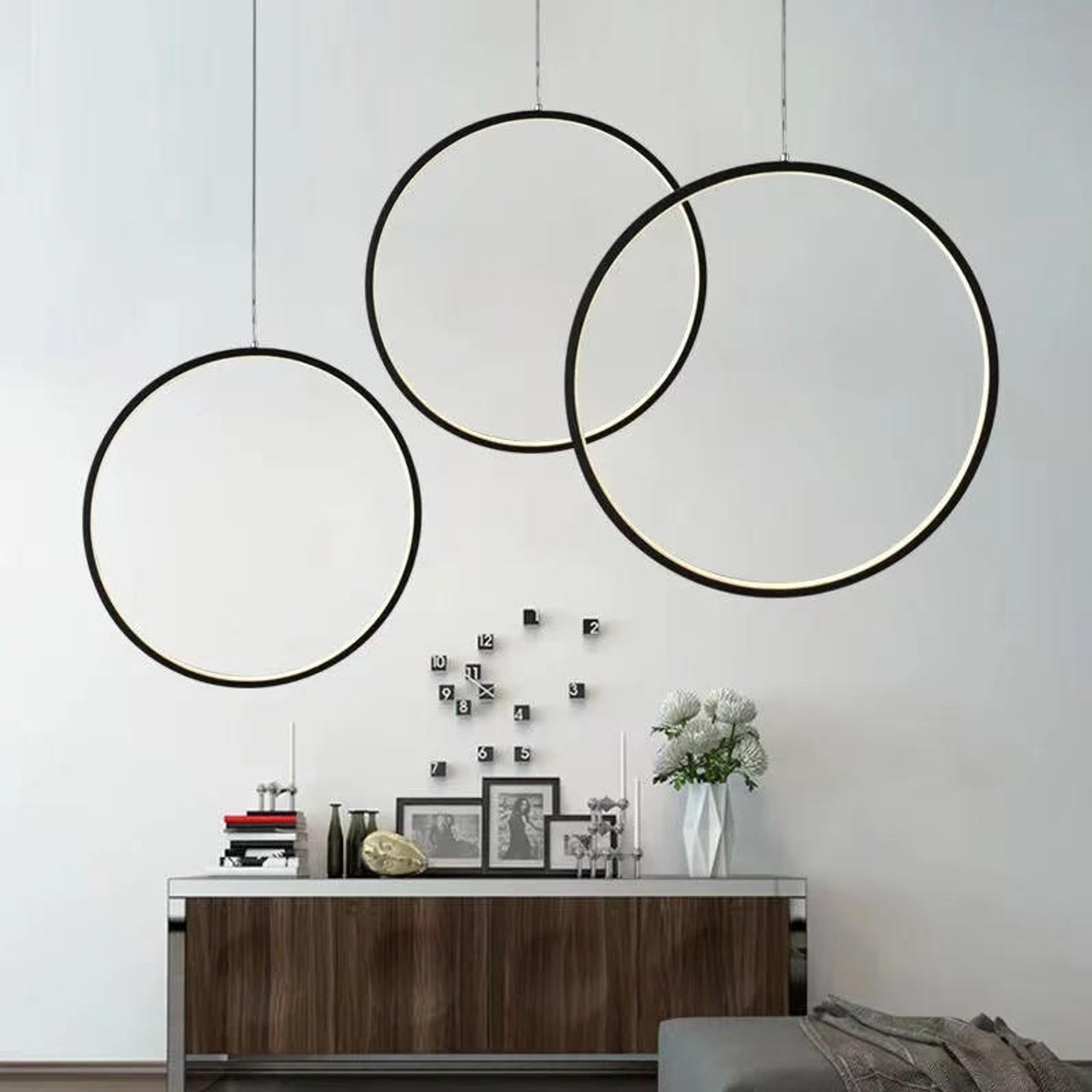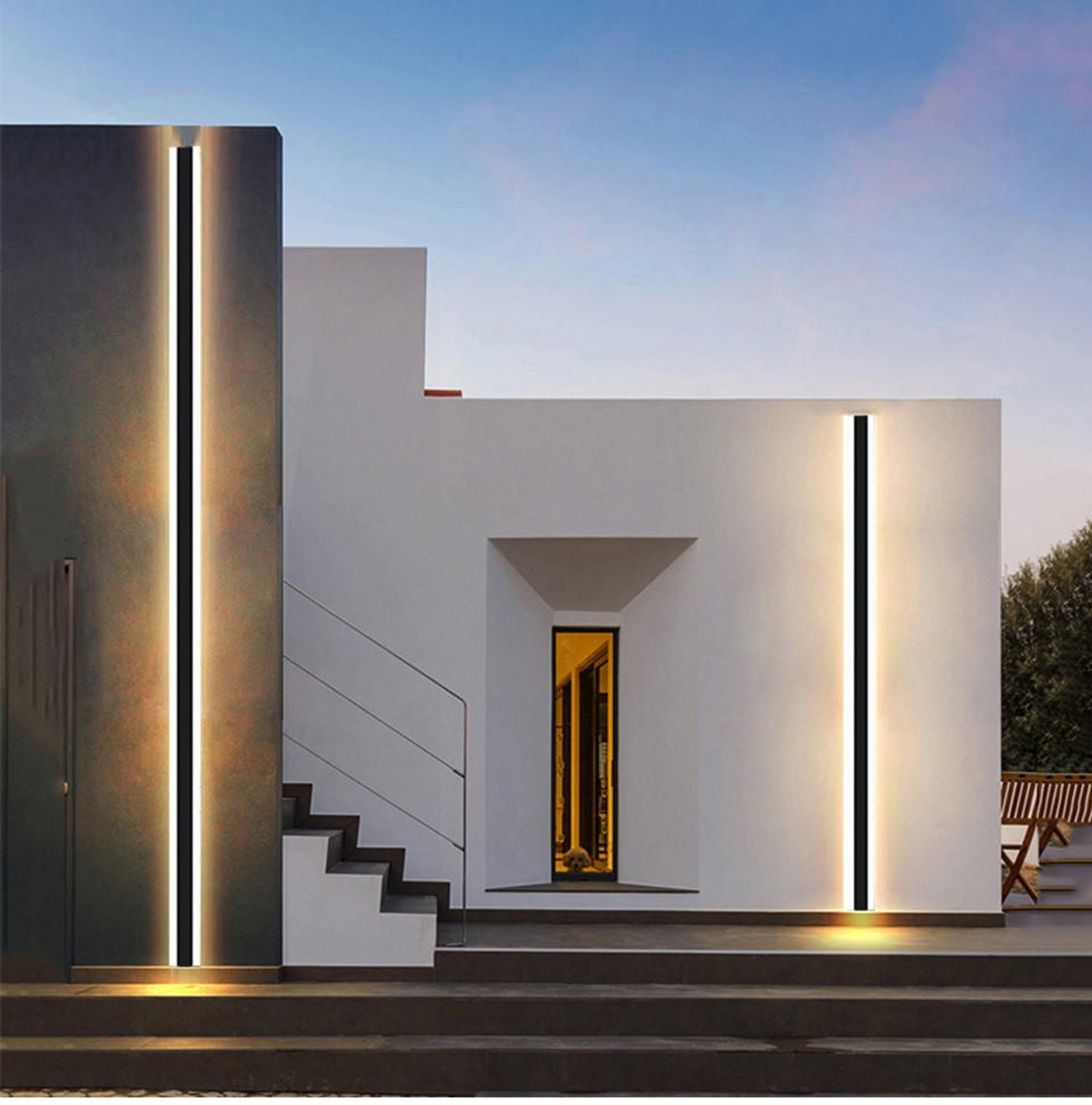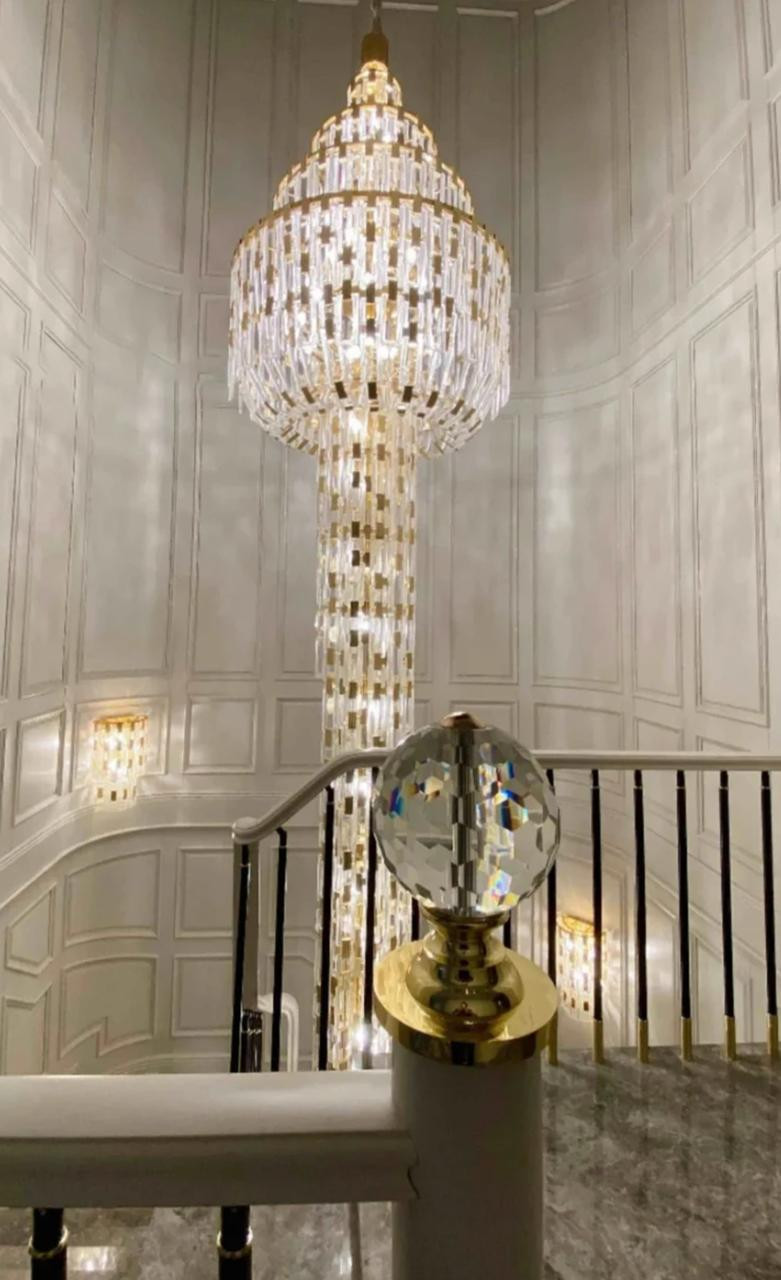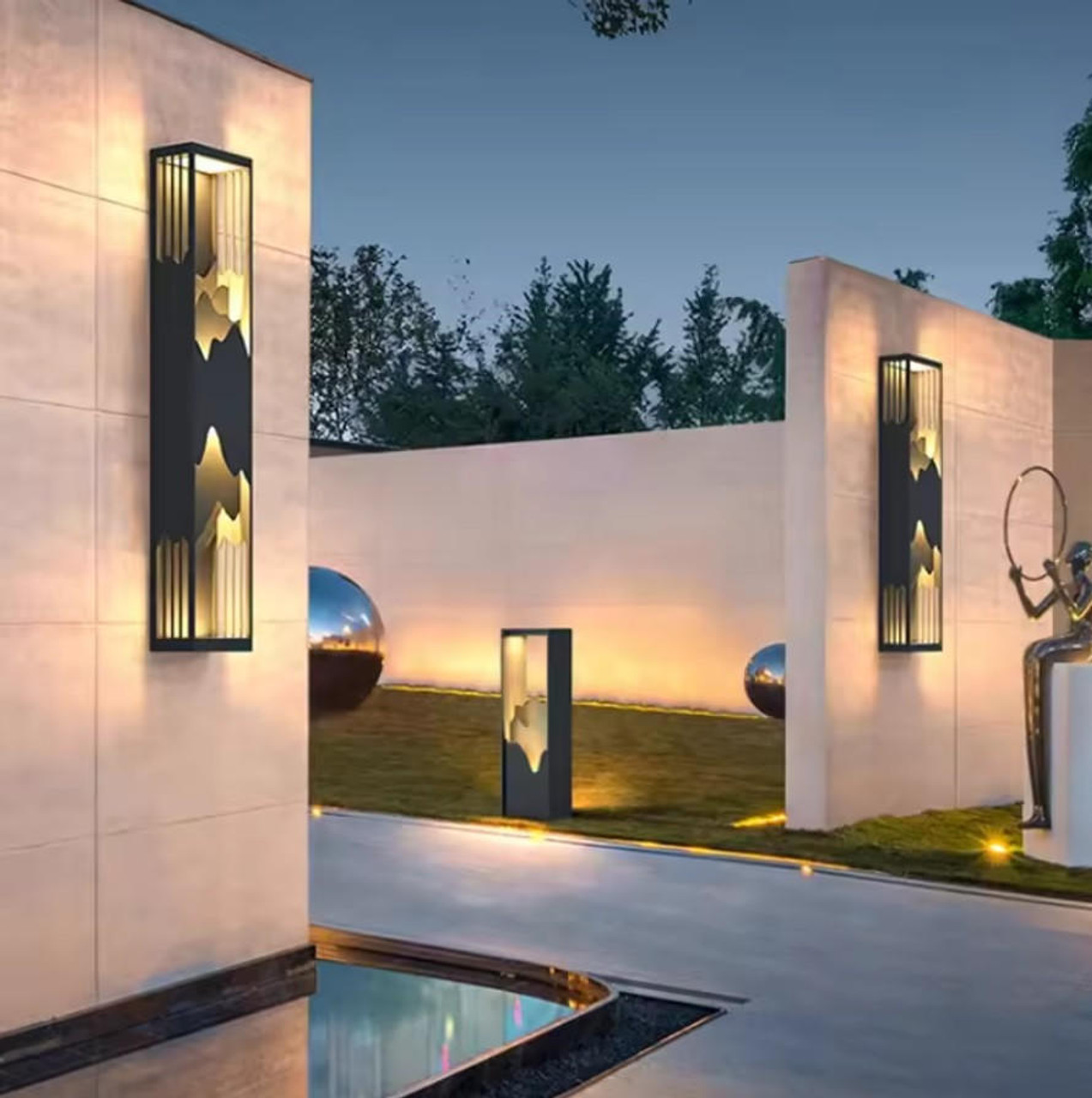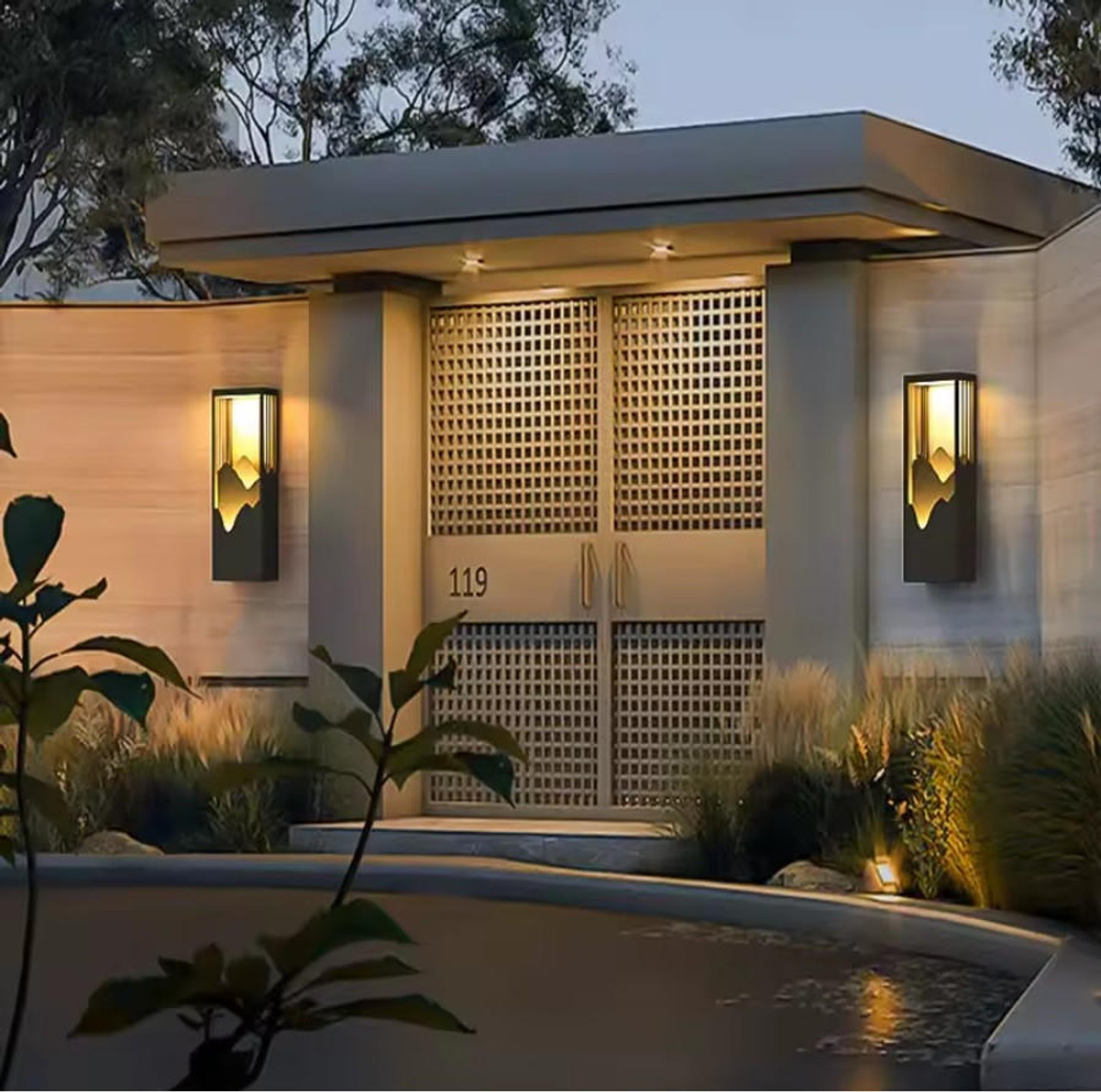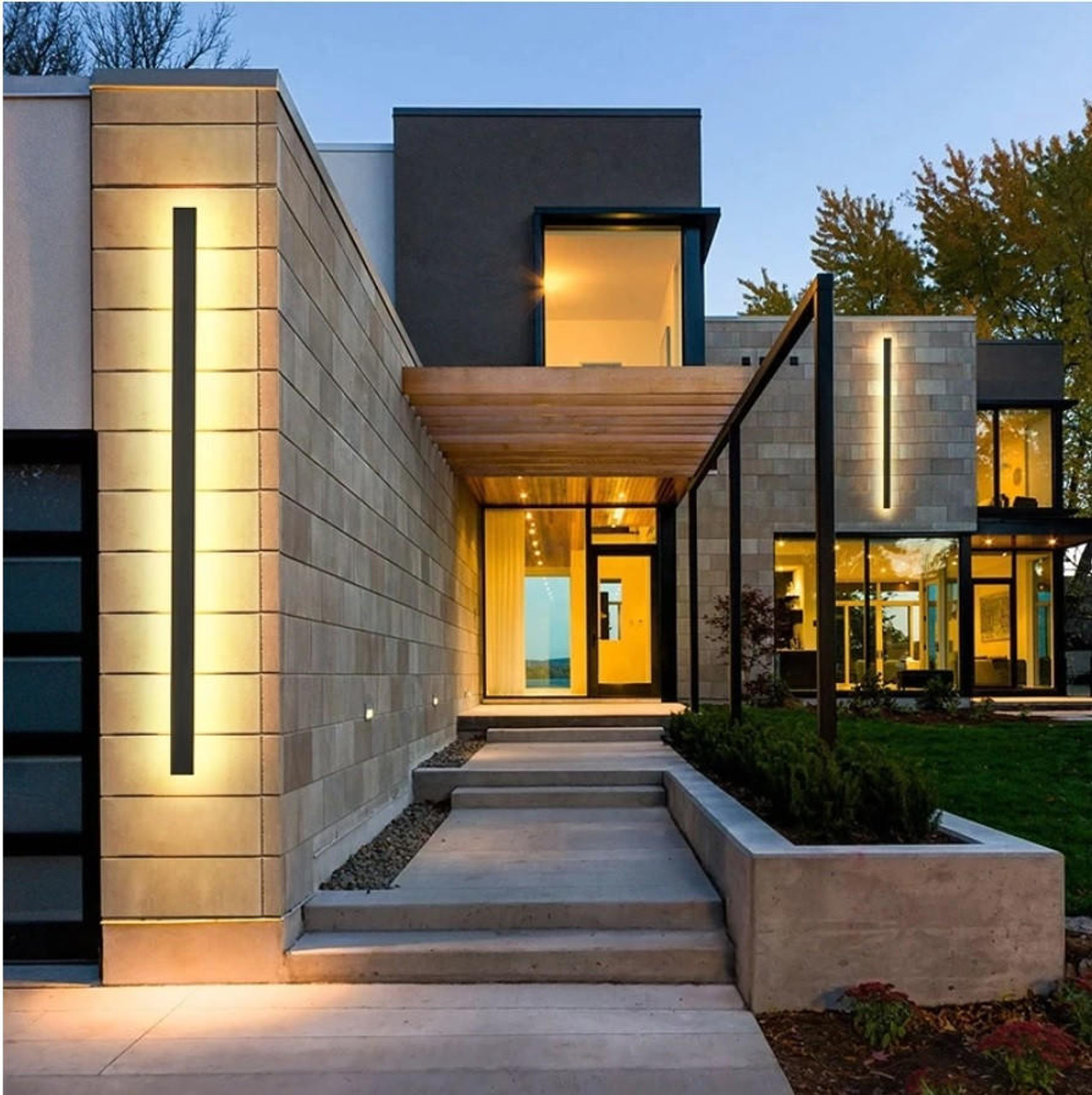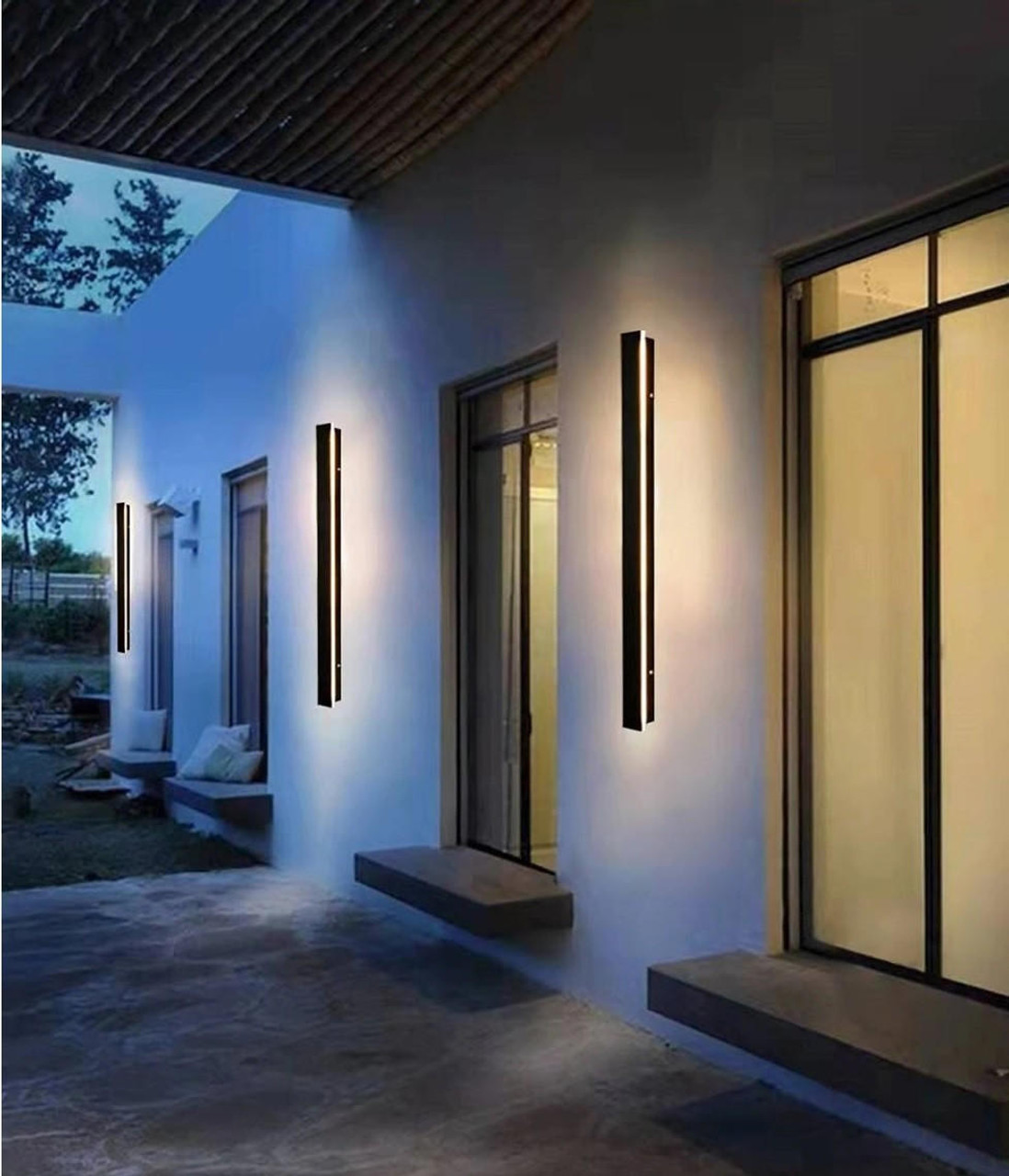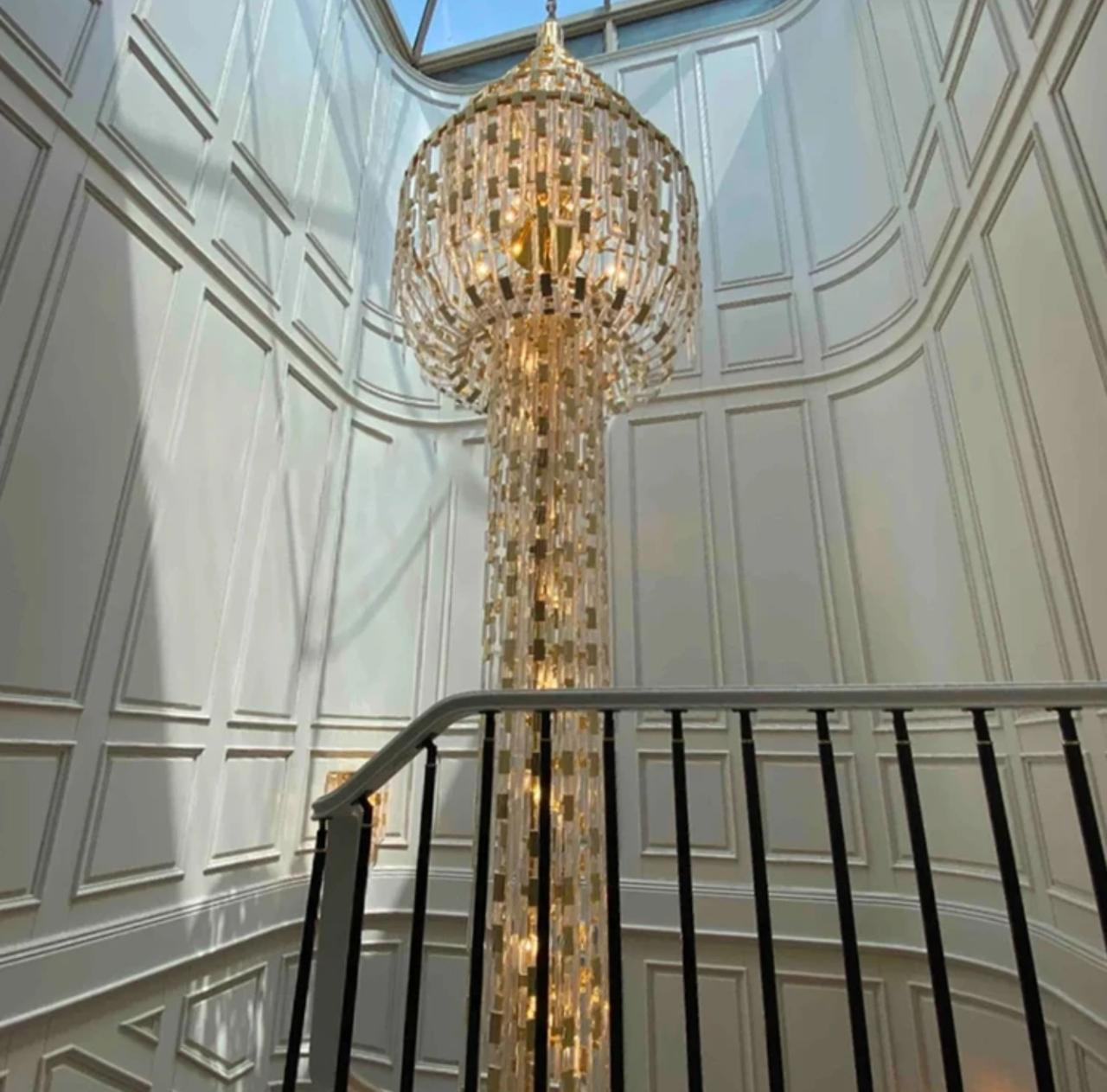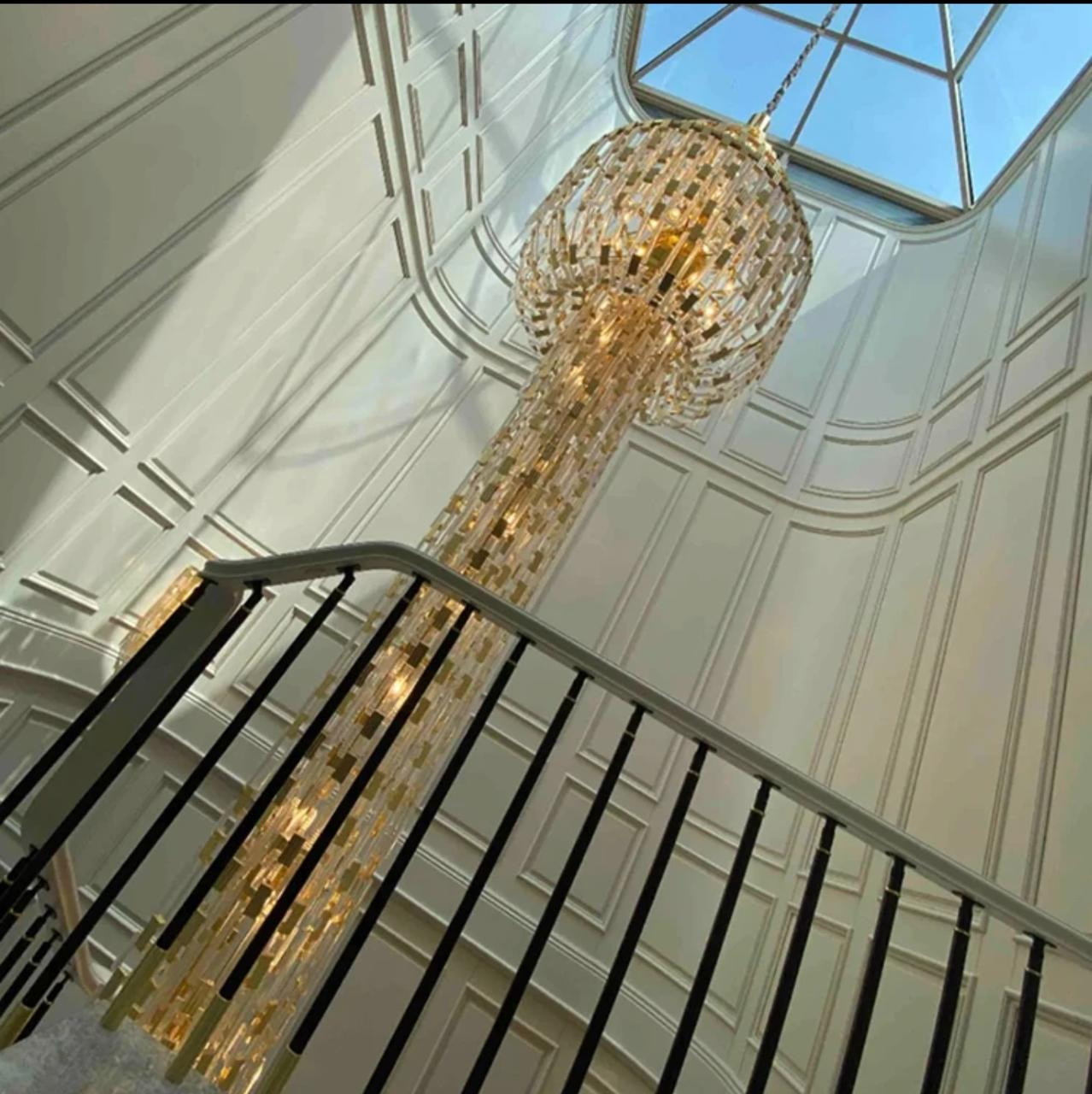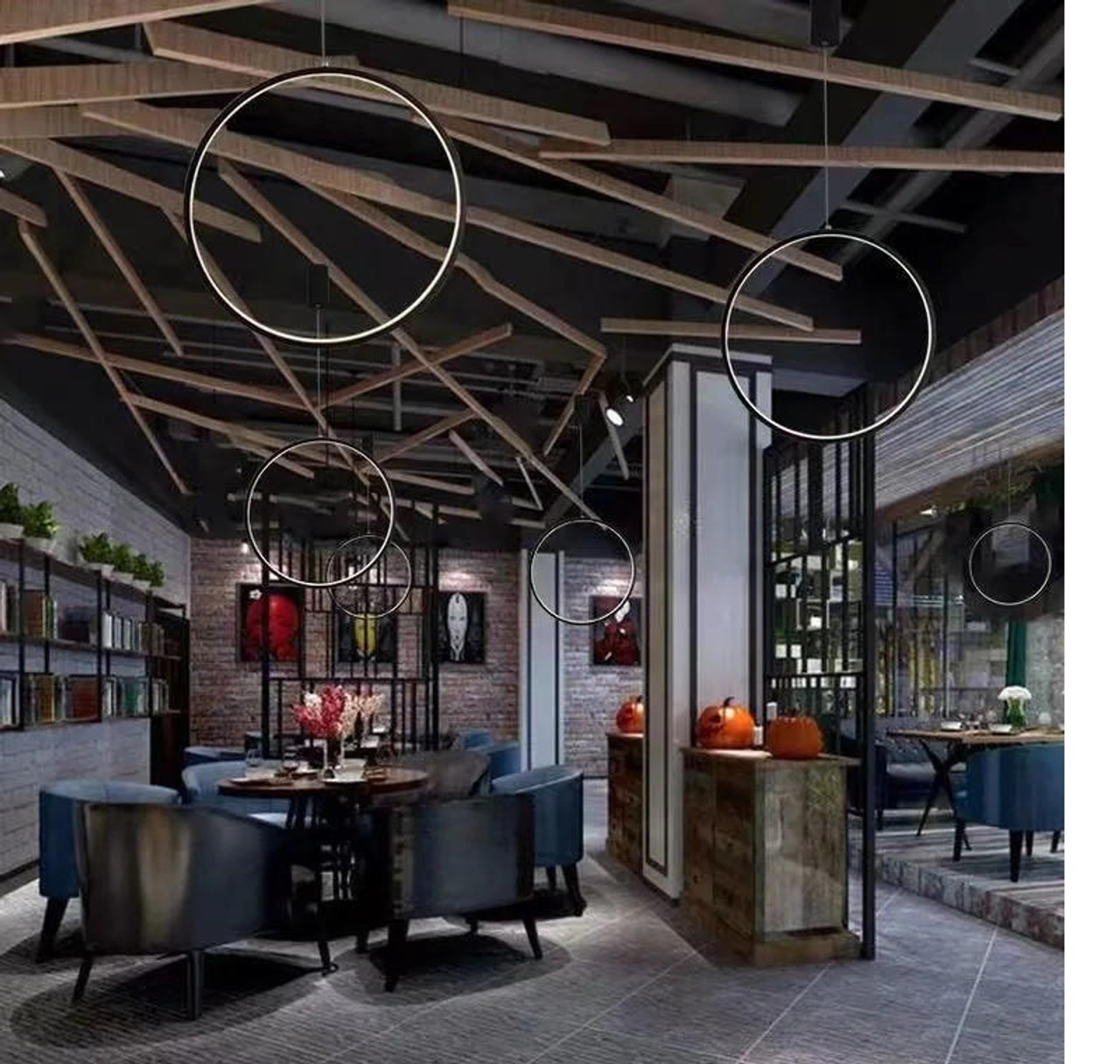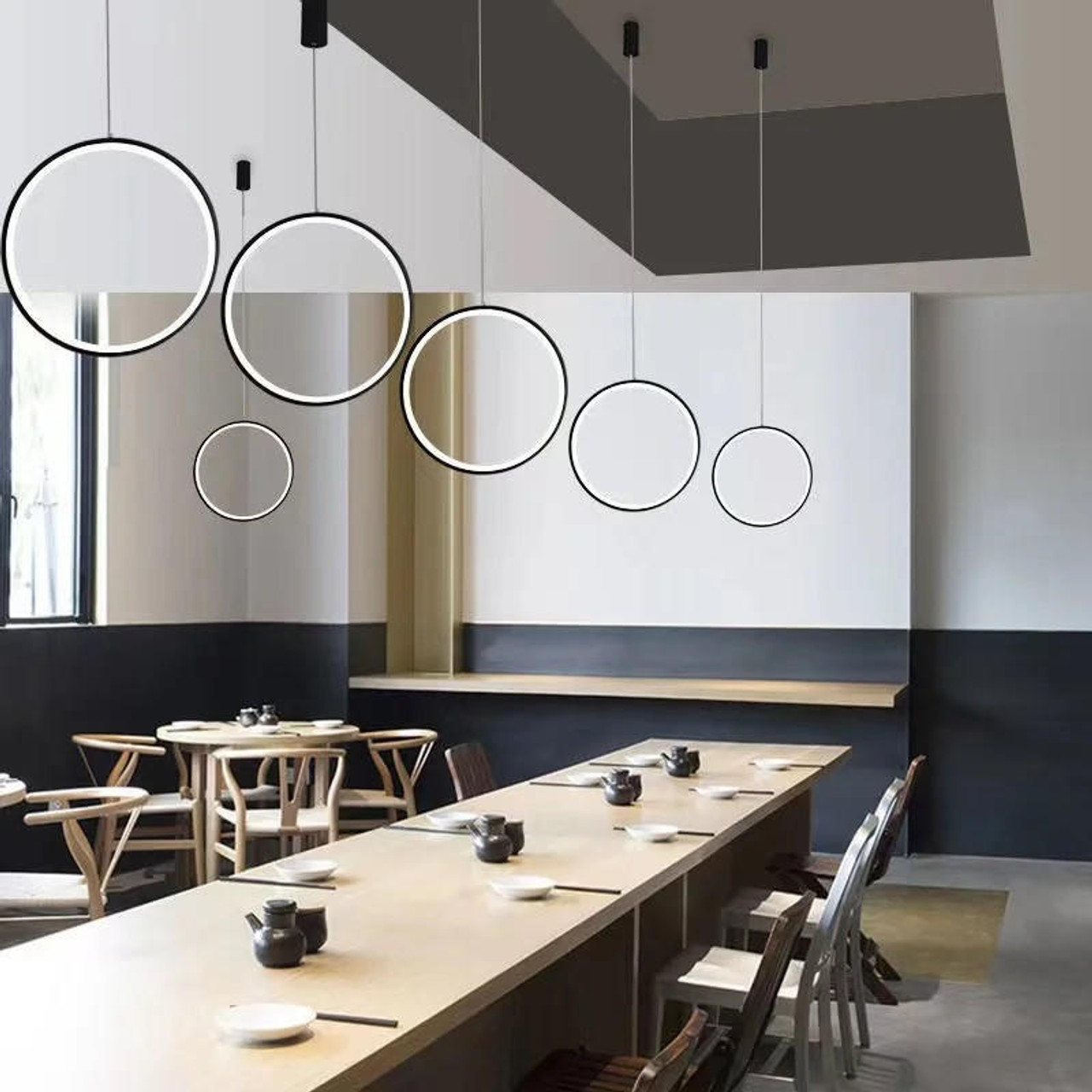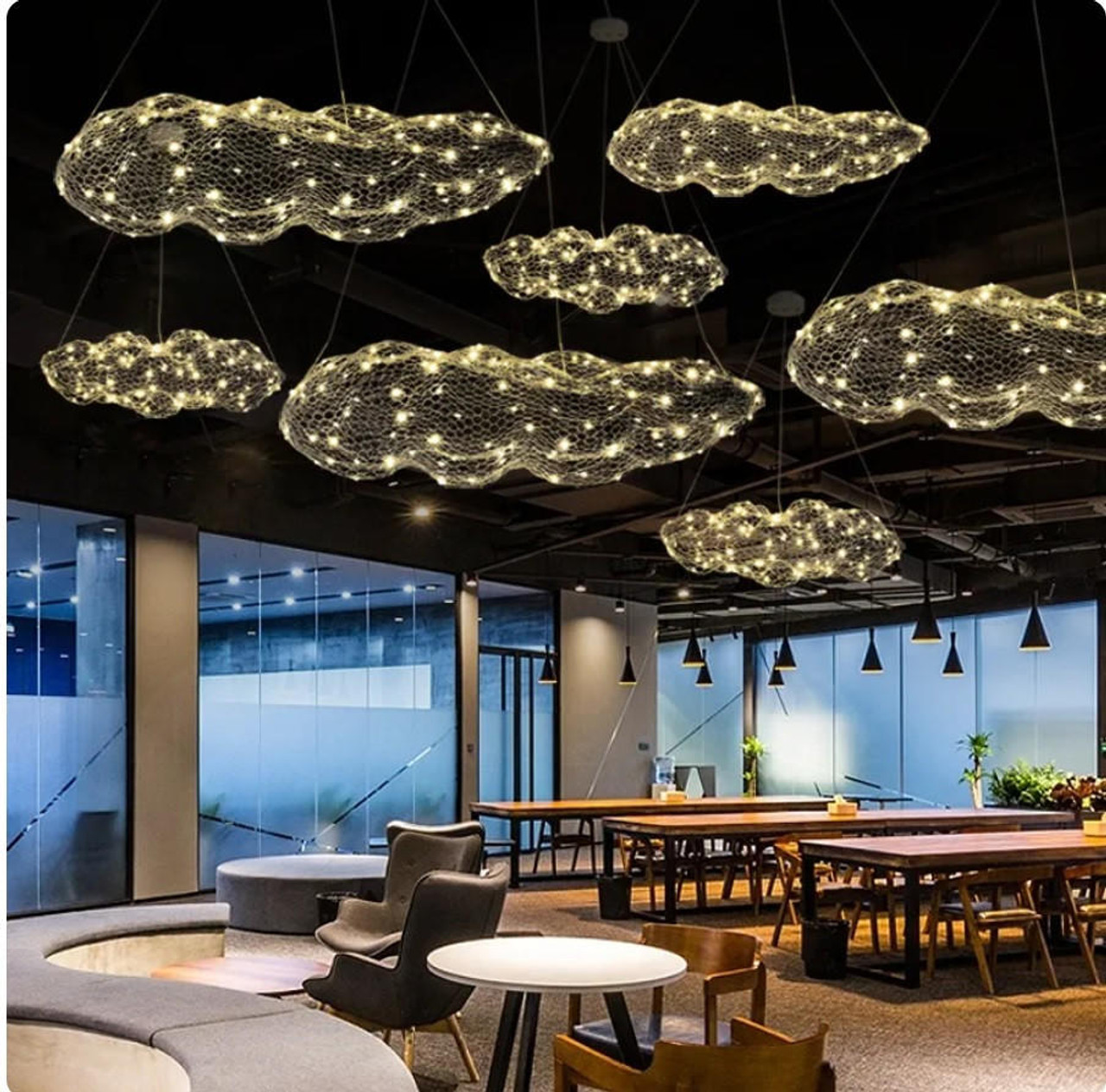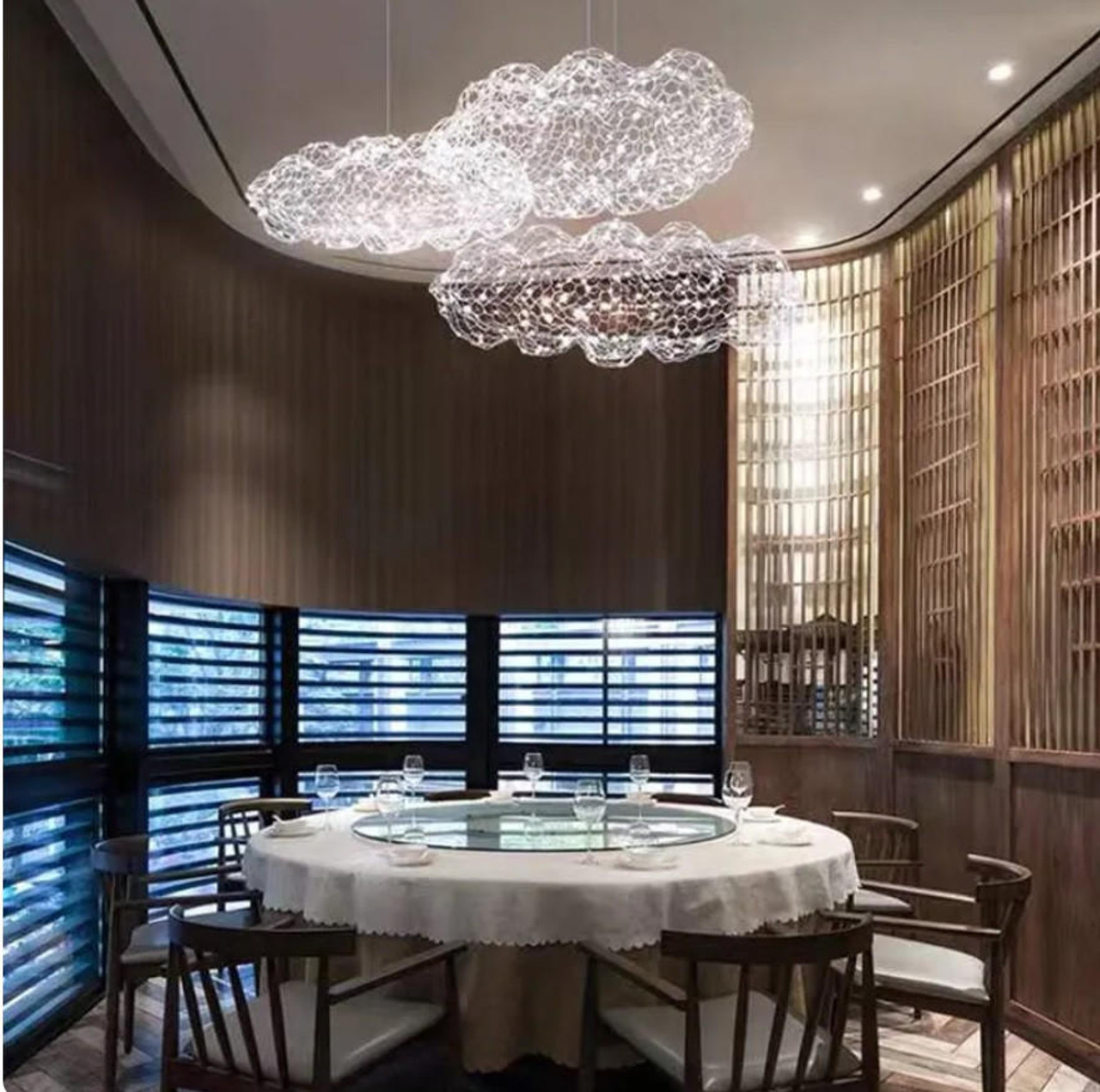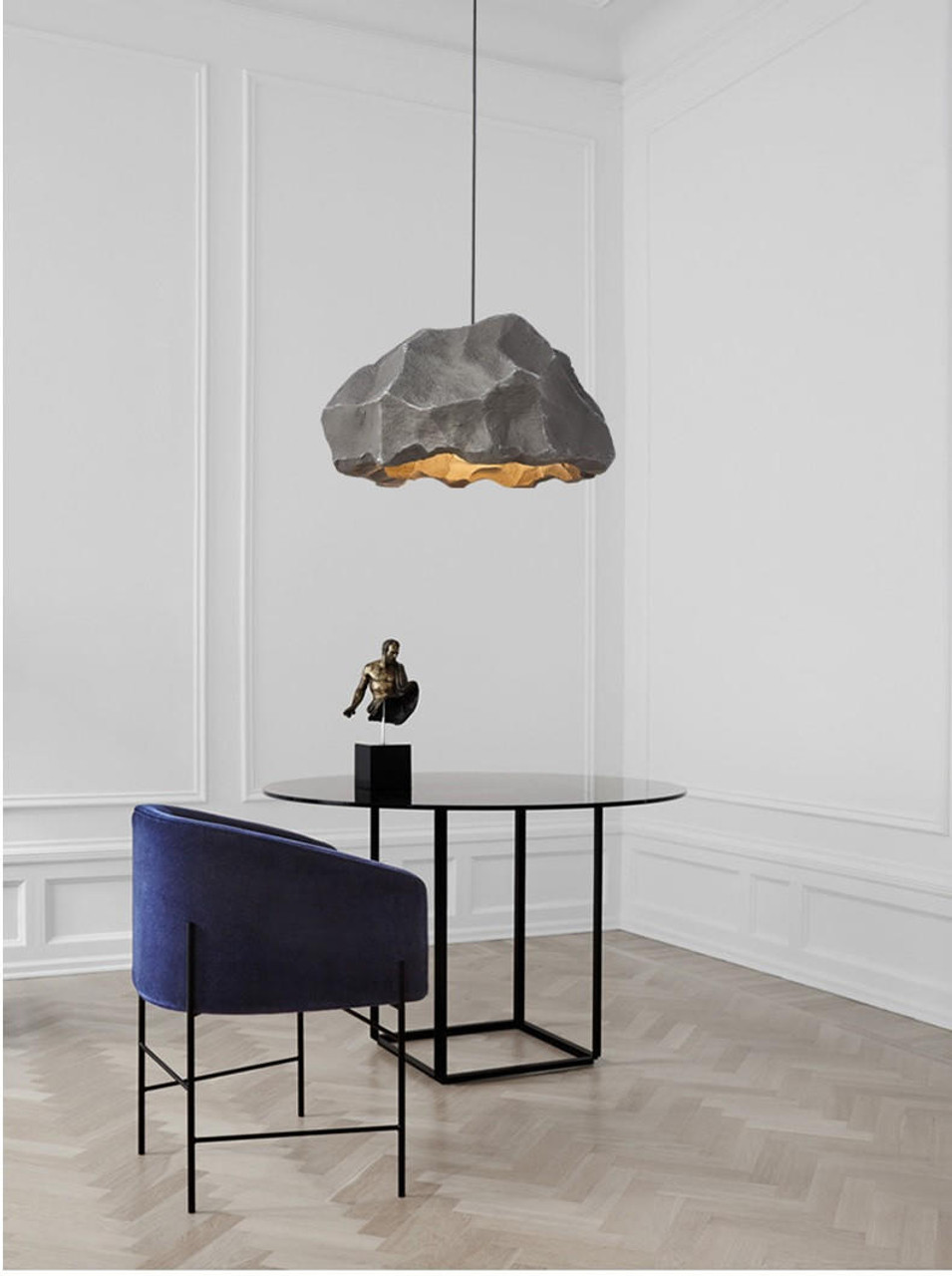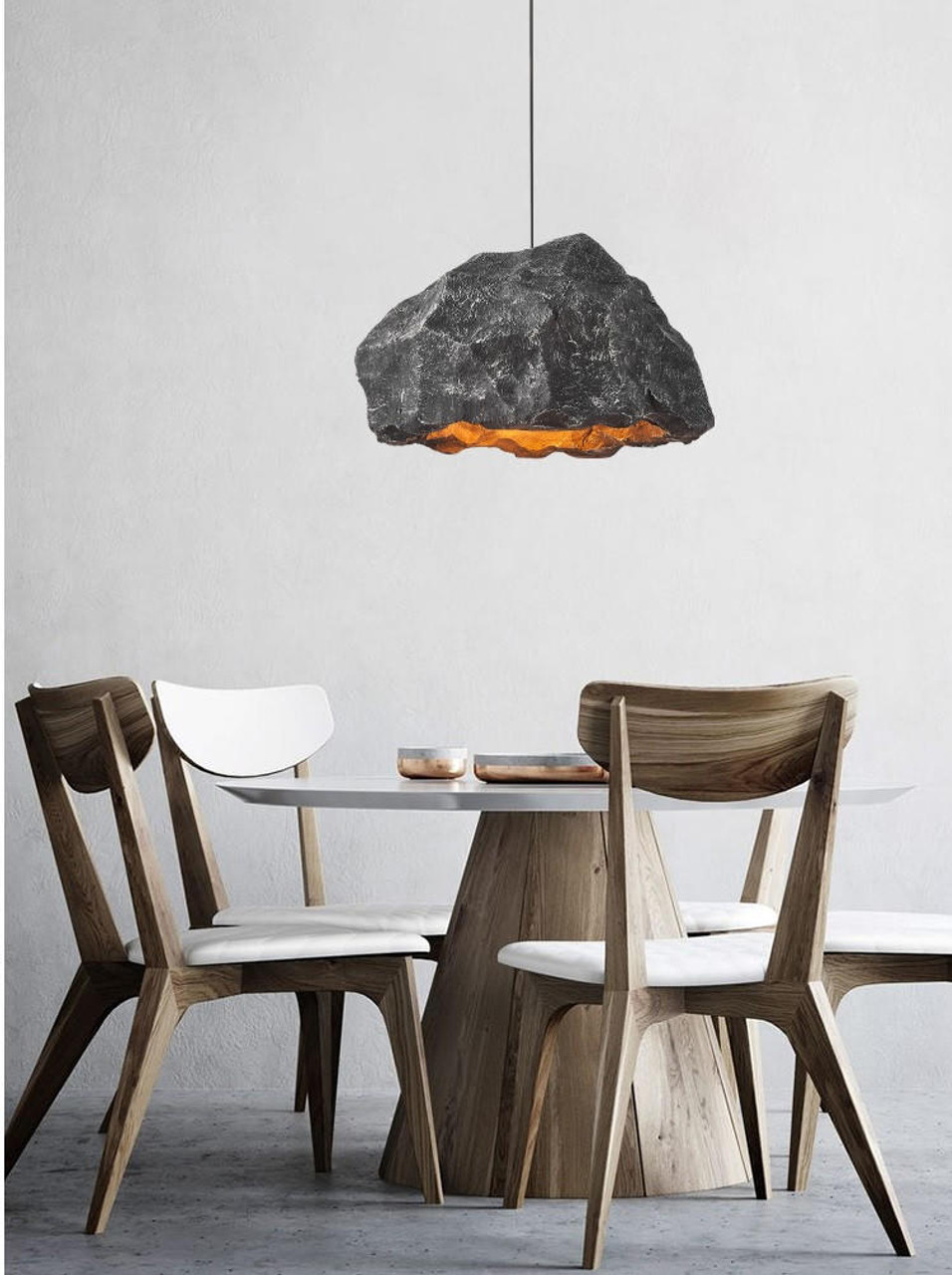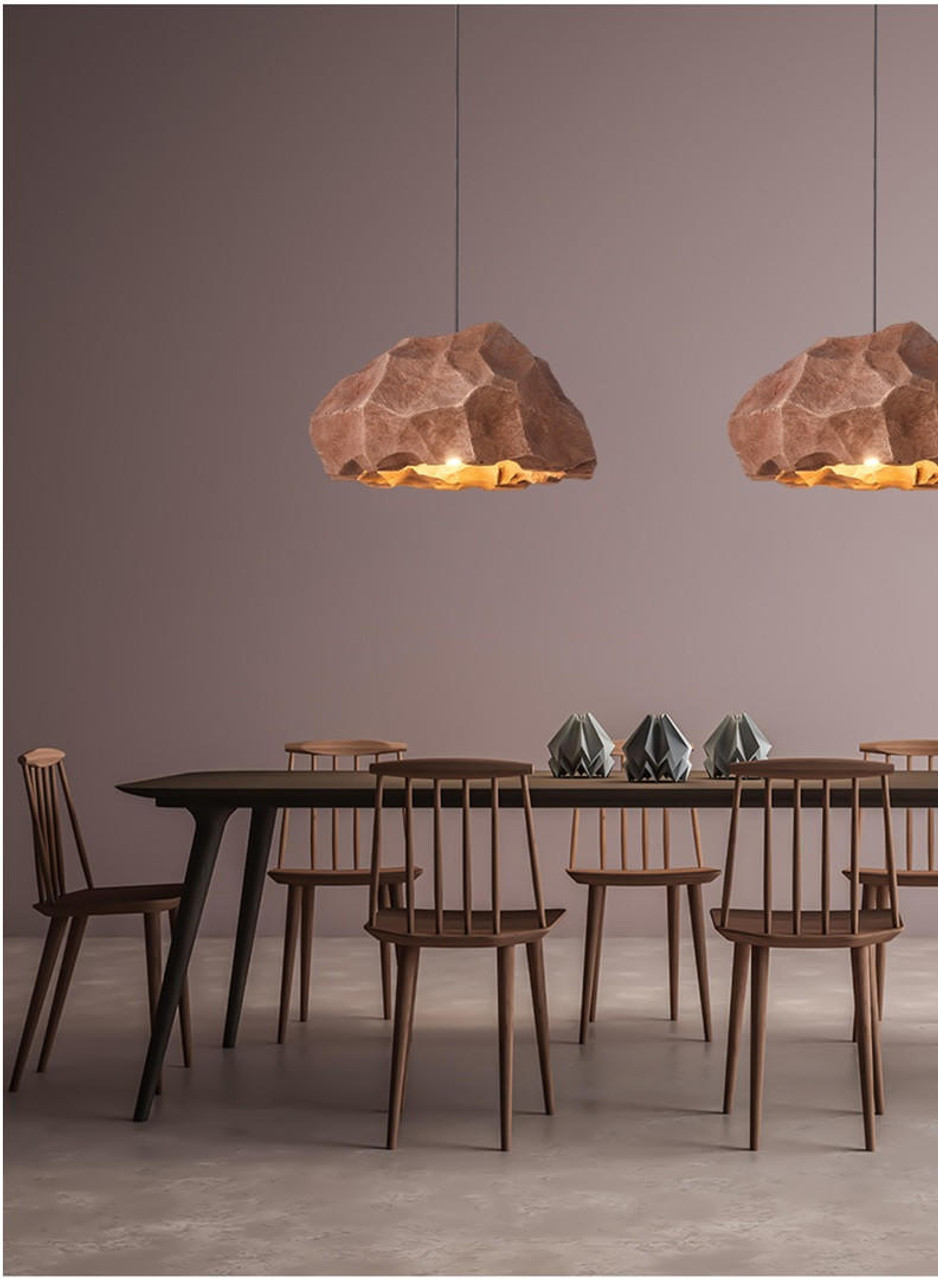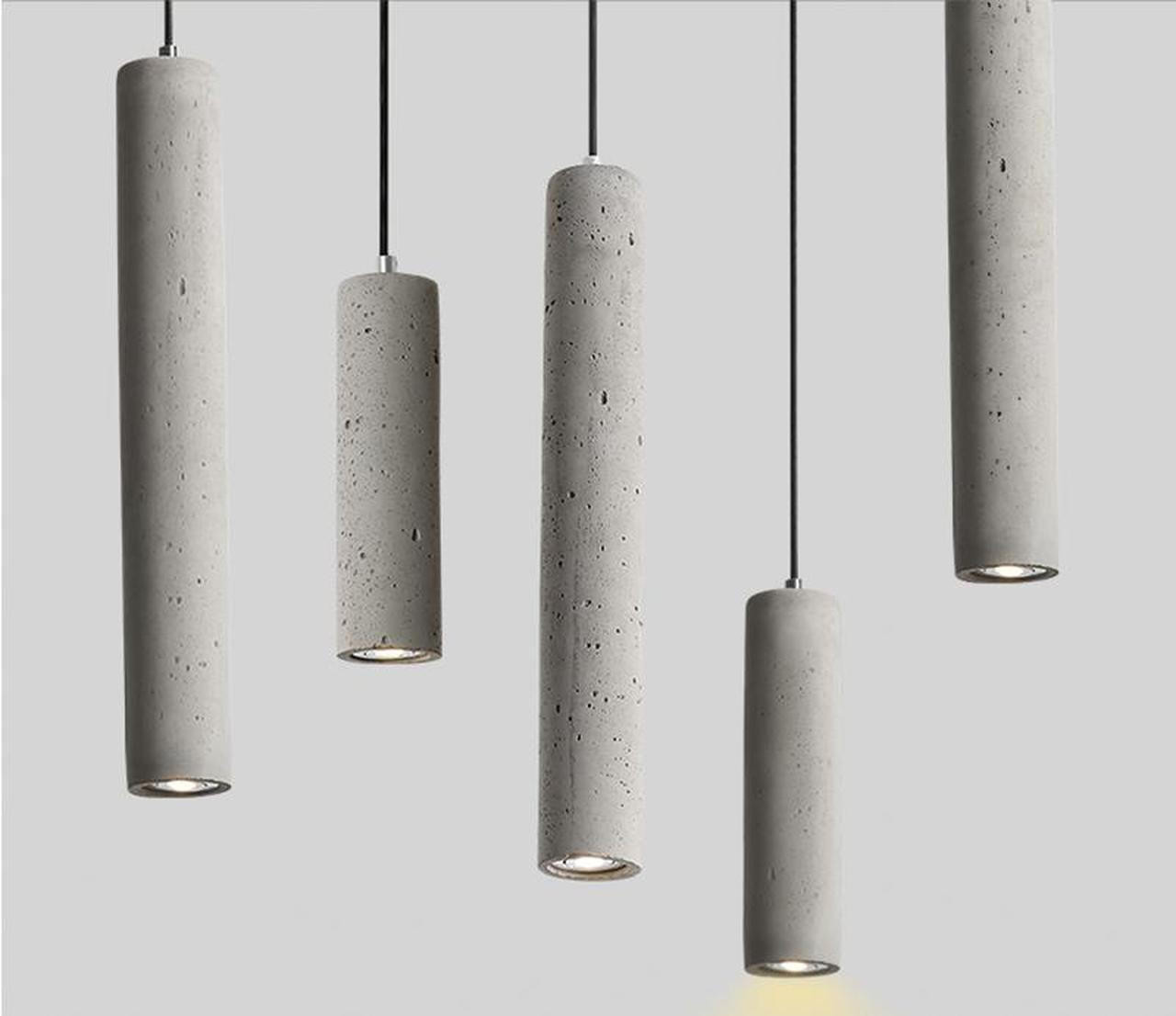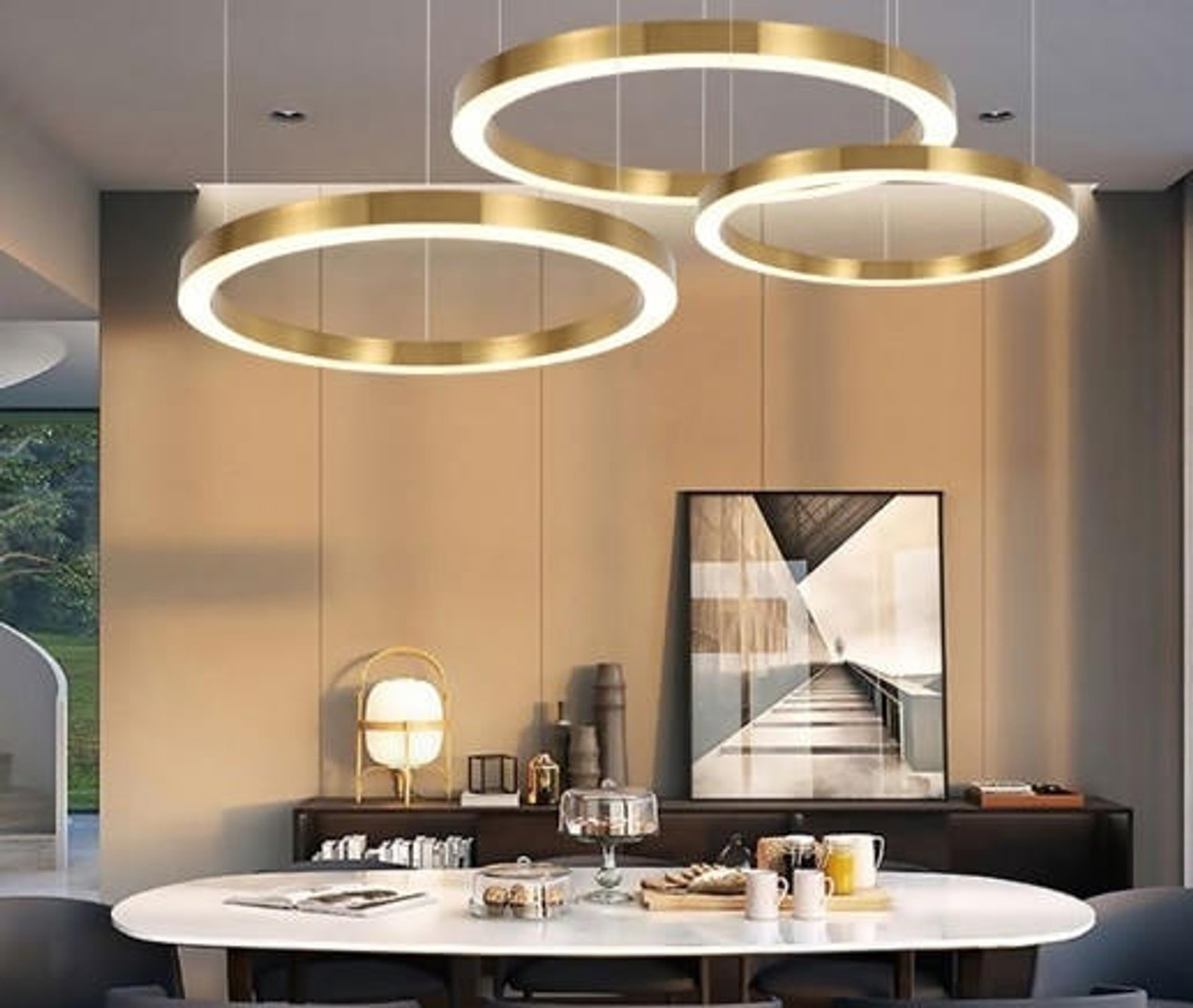Architectural Design Principles - SERIES 6 - Architecture Questions And Answers
Jul 26, 2024
In architecture why do we generally favor the "less is more" approach?
In architecture, the "less is more" approach, famously associated with the architect Ludwig Mies van der Rohe, emphasizes minimalism and simplicity in design. This philosophy is favored for several reasons:
- Clarity and Focus: Minimalist design strips away non-essential elements, allowing the essential qualities of the materials and the design itself to come to the forefront. This creates a clear, uncluttered aesthetic that focuses on each element’s purpose and function.
- Timelessness: By avoiding overly ornate or trend-specific features, minimalist architecture tends to achieve a timeless quality. Simple forms and compositions are less likely to appear dated as design trends evolve.
- Functionality: "Less is more" also prioritizes functionality. Without excessive decoration or superfluous components, the design is streamlined, making spaces more usable and adaptable to different needs.
- Material Honesty: This approach often involves using materials in their most natural and unadorned state, showcasing their inherent beauty. This not only celebrates the materials but also often results in more sustainable and honest architecture.
- Visual Tranquility: Minimalist architecture can create a sense of calm and tranquility. In a world often filled with visual and sensory clutter, simple designs provide a visual rest, enhancing the well-being of its users.
- Economic Efficiency: Using fewer materials and simpler designs can also be economically advantageous. Reducing complexity in design and construction can lead to lower costs and faster construction times.
- Spatial Quality: Minimalist architecture often makes better use of space. Without unnecessary internal walls or decorative elements, interiors can be more flexible, spacious, and light-filled.
The "less is more" philosophy in architecture aligns with modern ideals of beauty, efficiency, and sustainability, making it a compelling approach in contemporary architectural practice.
In architecture what is the Dick Van Dyke step?
The term "Dick Van Dyke step" in architecture refers to a design or construction feature that is a tripping hazard, similar to the famous scene in the opening credits of The Dick Van Dyke Show, where Dick Van Dyke trips over an ottoman. In architectural terms, it typically points to a step that is either unexpected or not clearly visible, potentially causing people to trip or stumble.
This concept is often used in discussions of design flaws or safety in architecture, emphasizing the importance of clear visual cues and adherence to safety standards in building design. It highlights how essential it is for architects and designers to consider the natural flow of movement and the intuitive use of space to prevent accidents and ensure the comfort and safety of the building's occupants. Steps or changes in elevation should be clearly marked or designed in a way that they are immediately obvious to those moving through the space.
In architectural design why do we need a good reason to rotate a floor plan?
In architectural design, rotating a floor plan can significantly influence the building's functionality, aesthetics, and interaction with its environment. Such a decision should be made with careful consideration and good reasons, as it can fundamentally change the dynamics of a space. Here are some compelling reasons why architects might choose to rotate a floor plan:
- Optimal Solar Orientation: One of the primary reasons to rotate a floor plan is to achieve better solar orientation. This can maximize natural lighting and enhance energy efficiency. For example, rotating a floor plan to face south in the northern hemisphere can increase solar gain in winter, reducing heating costs.
- Views and Privacy: Rotation can be used to capture desirable views or to shield the interior from less desirable ones. It can also enhance privacy by orienting living spaces away from public views or neighboring buildings.
- Wind Orientation and Ventilation: Aligning a building to take advantage of prevailing winds can improve natural ventilation, reducing reliance on mechanical systems and enhancing indoor air quality. Rotation might be necessary to align windows and other openings with these breezes.
- Topographical Integration: In sites with uneven topography, rotating a floor plan can help integrate the building more seamlessly with the landscape. This can involve aligning the building along natural contours to minimize earthwork or to stabilize the structure on a slope.
- Urban or Site Context: In urban settings, the rotation of a floor plan might be necessary to align with street grids or to respond to specific urban planning guidelines. This can also be a response to the unique shape of a plot, ensuring efficient use of space and alignment with surrounding infrastructure.
- Functional and Spatial Requirements: Internally, rotating a floor plan can help organize spaces according to their use, acoustics, or flow of movement. For instance, public and private areas might be oriented differently to optimize access or comfort.
- Symbolic or Cultural Significance: Sometimes, buildings are rotated to achieve a particular symbolic orientation or to adhere to cultural practices. For example, religious or spiritual buildings often have specific orientation requirements that must be respected.
- Aesthetic and Design Impact: Architectural aesthetics can also dictate the rotation of a floor plan. A rotated plan might offer a more dynamic interaction of forms and spaces, creating a unique architectural expression that distinguishes a building.
Rotating a floor plan is not a trivial decision and involves rethinking how the building will sit in its environment and how it will function. It should be justified by clear benefits in terms of environmental factors, functionality, or aesthetic values. When done thoughtfully, rotation can significantly enhance the building’s performance, user experience, and overall architectural quality.
In architectural design why is it important to show structural columns early on in the design process?
In architectural design, showing structural columns early in the design process is crucial for several reasons, all of which significantly impact the overall development and success of the project. Here’s why it's important:
1. Structural Integrity and Safety
Structural columns are critical components that support the building's load, ensuring its structural integrity and safety. Identifying their locations early helps in planning the layout and ensuring that the building will be structurally sound. This early planning helps to avoid potential structural issues or costly modifications later in the design and construction phases.
2. Efficient Space Planning
Columns can significantly influence the layout of interior spaces. Their placement affects the flow of movement, the division of space, and the overall functionality of the building. Knowing where these columns will be allows architects to design more efficiently around these fixed points, optimizing usable space and creating a functional interior layout.
3. Aesthetic Integration
Columns not only have a structural purpose but also an aesthetic one. By considering them early in the design process, architects can integrate columns into the aesthetic and thematic elements of the building. This can enhance the design by making columns a feature of the architectural expression rather than merely functional elements.
4. Coordination with Mechanical, Electrical, and Plumbing (MEP) Systems
The placement of structural columns needs to be coordinated with MEP systems to ensure that there are no conflicts during construction. For example, ductwork, piping, and wiring need clear pathways, and early column placement helps in planning these routes effectively, avoiding clashes and interference.
5. Regulatory and Compliance Issues
Early identification of column locations can help in ensuring compliance with building codes and regulations, which may dictate certain aspects of structural design, such as egress, fire safety, and accessibility. Knowing column placements helps address these regulations early in the design process.
6. Cost and Resource Efficiency
Adjusting structural elements like columns can be costly if done late in the design process or during construction. Early planning helps minimize the need for changes that could result in delays and increased costs. It also allows for more accurate estimation of materials and costs, aiding in budget management.
7. Communication with Stakeholders
Having a clear understanding of where structural columns are located helps in communicating the design effectively to stakeholders, including clients, contractors, and engineers. Clear communication ensures that everyone involved understands the constraints and opportunities of the design, leading to smoother project execution.
In summary, the early inclusion of structural columns in architectural designs is vital for ensuring structural safety, efficient space usage, aesthetic harmony, coordination of building systems, regulatory compliance, cost control, and effective communication. This proactive approach in the initial stages of design fosters a more integrated, functional, and successful architectural project.
What are the typical distances between structural columns in wood and steel?
The typical spacing between structural columns varies significantly depending on the type of construction material used, the architectural design, and the specific load requirements of the building. Here’s a general overview for typical distances between structural columns for both wood and steel constructions:
Wood Columns
Range:
- In residential construction, wooden columns (which may be actual columns or more commonly, wooden posts or stud walls) are typically spaced closer together due to wood's relatively lower structural strength compared to steel. Common spacings can range from 8 to 16 feet.
- For larger wooden structures, such as those used in commercial or industrial applications, spacing might be adjusted according to the load-bearing requirements and the type of wood used. Engineered wood products, like glulam (glued laminated timber) and LVL (laminated veneer lumber), can allow for greater spans and column spacings.
Factors Influencing Spacing:
- The type of wood used (solid timber, composite wood, etc.).
- The overall dimensions and height of the building.
- Load-bearing requirements including snow, wind, and seismic loads.
- Intended use of the space (residential, commercial, industrial).
Steel Columns
Range:
- Steel columns can generally span larger distances due to steel’s higher strength. Typical spacings in commercial or industrial constructions range from 20 to 40 feet, allowing for large open spaces that are free of structural obstructions.
- In high-rise buildings, where steel frame structures are common, the column spacing might also depend on the architectural design and the functional requirements of the building.
Factors Influencing Spacing:
- The grade and form of steel used (e.g., structural steel sections, reinforced steel, etc.).
- The height of the building and the number of floors it supports.
- External loads, including environmental influences like wind and earthquake forces.
- The architectural layout and the need for open spaces within the design.
General Considerations
- Design Flexibility: Steel often offers more flexibility in terms of larger spans and fewer columns, which can be a critical design consideration in commercial and industrial buildings where large open spaces are needed.
- Cost Implications: Larger spans typically mean fewer columns and potentially lower costs in terms of foundations and floor system materials, but this can be offset by the higher cost of stronger, longer beams and deeper trusses.
- Building Codes and Regulations: Both wood and steel column spacing must comply with local building codes and regulations, which dictate safe construction practices and are based on both environmental and use-specific factors.
In conclusion, while typical spacings do exist, the appropriate distance between structural columns ultimately depends on a complex interplay of structural engineering, architectural design, and specific project requirements. Always professional consultation with an architect or structural engineer is recommended to determine the optimal column spacing for any given project.
In architectural design what can columns be used for in addition to structural support?
In architectural design, columns do much more than just provide structural support. They serve a variety of functions and can significantly enhance both the aesthetics and utility of a space. Here are some additional uses for columns in architecture:
1. Aesthetic Enhancement
Columns can be powerful design elements that add visual interest and beauty to a building. Their style, material, and detailing can contribute to the overall architectural expression and can be used to evoke a specific era or cultural influence. For example, classical columns with Corinthian, Ionic, or Doric capitals can lend a sense of grandeur and historical richness to a building.
2. Defining Spaces
In large open areas, columns can act as spatial dividers, helping to define and organize spaces without the need for full walls. This is particularly useful in large public spaces like museums, libraries, or open-plan offices, where columns can delineate pathways or functional zones without disrupting the flow of the space.
3. Symbolic Purposes
Columns can be used symbolically to convey strength, stability, and permanence. They are often employed in monumental architecture, such as government buildings and memorials, to evoke a sense of dignity and authority.
4. Supporting Aesthetic Elements
Beyond their structural role, columns can be used to support other architectural elements such as arches, beams, and entablatures, which in turn support roofs, balconies, or other overhangs. This not only adds to the functionality of these elements but also to the aesthetic cohesion of the overall design.
5. Lighting and Environmental Control
Columns can be designed to incorporate or support lighting fixtures, enhancing both the functionality and ambiance of a space. Additionally, columns can support shading devices or screens that control the amount of sunlight entering a building, contributing to passive solar heating and cooling strategies.
6. Wayfinding
In complex interiors, columns can serve as natural wayfinding tools, helping to guide visitors through a space. Their placement can indicate pathways, highlight transitions between different areas, or lead to focal points within a building.
7. Cultural and Historical Reference
Columns can be used to reference architectural styles that are culturally or historically significant, contributing to a building's thematic storytelling. This can be important in projects where historical context or cultural sensitivity is crucial.
8. Integration with Technology
Modern columns can also be designed to integrate technology, such as digital displays, sound systems, or other interactive elements, making them multifunctional components in contemporary architectural designs.
9. Outdoor Applications
In landscape architecture, columns can frame vistas, support pergolas and trellises, and serve as focal points within a garden or outdoor setting. They can also be functional in supporting outdoor lighting and surveillance systems.
In summary, columns in architecture serve multifaceted roles that extend far beyond mere structural necessities. They are versatile elements that can enhance both the functionality and aesthetic appeal of a building, making them indispensable in a wide range of architectural contexts.
In architectural design what is the 10-foot test?
The "10-foot test" in architectural design is a method used to evaluate the aesthetics and details of a building's facade or an interior space from a distance of about 10 feet. This approach is designed to focus on the visual impact and details that are perceptible from a moderate distance, which is roughly equivalent to viewing from across a small room. The test helps assess how materials, colors, and design details come together cohesively when seen from this close yet slightly distanced perspective.
Purpose of the 10-foot test:
- Detail Evaluation: At 10 feet, details such as the texture of materials, the quality of craftsmanship, and finer architectural details are visible. This distance allows designers and architects to ensure that the building or space appears refined and well-executed without needing to stand too close.
- Visual Impact: This test helps in assessing the immediate visual impact of a space or facade. It's particularly useful for evaluating retail environments, residential entries, or any area where the first impression from a human-scale distance is crucial.
- Cohesion: From 10 feet away, it's easier to gauge the overall aesthetic cohesion of different design elements. It helps in assessing whether the materials and colors work well together and whether the design feels harmonious.
- Functionality and Accessibility: While primarily aesthetic, the 10-foot test can also provide insights into the functionality of spaces, particularly in terms of signage readability and the intuitive use of space.
Application in Design Process:
- Iterative Review: During the design and construction phases, architects and designers will often conduct the 10-foot test multiple times, assessing various components as they are installed or completed.
- Client Walkthroughs: This test is also useful during client walkthroughs to help clients visualize and understand the intended impact of the design choices at a practical distance.
The 10-foot test complements other evaluative scales, such as the more distant "drive-by test" (assessing the curb appeal from a vehicle or farther distance) and the close-up inspection (detail-oriented assessment). Together, these methods ensure that architectural and interior designs meet aesthetic and functional expectations at all viewing distances.
In architectural design why is it more efficient to design in sections rather than solely on floor plans first?
Designing in sections rather than focusing solely on floor plans from the outset is a strategic approach in architectural design that offers several efficiency and comprehension benefits. This method helps architects understand and visualize the vertical relationships and spatial dynamics within a building more comprehensively. Here’s why this approach is considered more efficient:
1. Three-Dimensional Understanding
- Spatial Relationships: Sections allow designers to visualize the vertical dimensions and relationships between different spaces. This includes ceiling heights, vertical circulation (like staircases and elevators), and how different floors interact with one another.
- Structural Integrity: Viewing a building in section helps in understanding the structural demands and supports, such as column placement and load-bearing walls, which might not be apparent in a floor plan.
2. Light and Ventilation
- Natural Light: Sections can show how natural light enters and moves through the building at different times of the day and across seasons, which is crucial for sustainable and comfortable interior environments.
- Ventilation Paths: Sections help in planning the flow of air, crucial for natural ventilation strategies and ensuring that all areas of the building are well-ventilated.
3. Scale and Proportion
- Human Scale: Sections help architects ensure that the proportions and scales of different spaces are appropriate to human use, something that floor plans alone might not adequately convey.
- Room Volumes: Understanding the volume of each space can impact decisions about materials, finishes, and the overall ambiance of the room.
4. Integration of Building Systems
- Mechanical, Electrical, and Plumbing (MEP): Sections are critical for planning the integration of MEP systems. These systems often require vertical spaces like shafts and service runs that need to be coordinated across different levels and are more clearly understood in a sectional view.
- Compliance with Regulations: Sections help ensure that the design meets building codes and regulations, especially those related to safety measures like fire escapes, stairwell sizes, and ceiling heights.
5. Enhanced Communication with Stakeholders
- Clearer Visualizations: Sections provide clients, contractors, and design team members with a clearer understanding of the proposed design in a more tangible way than floor plans can, particularly in terms of the feel and flow of spaces.
- Conflict Resolution: Potential design conflicts between structural elements and aesthetic intentions can be identified and resolved earlier when working with sections.
6. Material and Construction Efficiency
- Accurate Material Quantification: Sections help in accurately estimating the amount of materials needed, especially for vertical elements like walls and facades.
- Construction Phasing: Understanding the building in section can assist in planning the construction process, including sequencing and phasing of different building components.
By designing in sections, architects gain a more holistic view of how a building functions as a three-dimensional object in space, rather than just an arrangement of rooms. This approach leads to better-informed decisions, higher quality outcomes, and more effective communication of complex ideas.
Why should an architect design in perspective?
Designing in perspective is a vital tool for architects because it provides a more realistic and dynamic way to visualize and communicate the spatial qualities of a design. Here are several key reasons why architects should incorporate perspective drawings in their design process:
1. Realistic Visualization
- Spatial Depth: Perspective drawings offer a three-dimensional representation of space, showing depth and volume, which flat drawings like plans and elevations cannot convey. This helps architects and clients better understand how various elements within the space relate to each other spatially.
- Real-Life View: These drawings mimic what the human eye would see in real life, making them essential for evaluating the aesthetic and functional aspects of a design from a user’s viewpoint.
2. Enhanced Communication with Clients and Stakeholders
- Immediate Understanding: Perspective drawings are more intuitive and relatable for non-professionals than technical drawings. They help clients and other stakeholders visualize the proposed design in a form that is closer to reality, enhancing their ability to make informed decisions and provide meaningful feedback.
- Emotional Impact: By providing a more vivid and engaging representation, perspective drawings can evoke emotional responses, helping clients connect with the design on a personal level.
3. Design Evaluation and Refinement
- Spatial Analysis: Designing in perspective allows architects to assess proportions, scales, and relationships between different elements within the space more effectively. It is easier to spot potential issues with flow, furniture layout, or how space feels overall.
- Light and Shadow: Perspectives can include realistic lighting effects, showing how light interacts with the design elements throughout the day. This is crucial for assessing the quality of light within interior spaces and the impact of natural light on the building’s facade.
4. Integration with Environment
- Contextual Fit: Perspectives can show a building in context with its surroundings, whether it’s an urban landscape, a suburban area, or natural scenery. This helps in evaluating how well the design integrates with its environment.
- Impact on Views: Through perspective drawings, architects can determine how the building will look from various viewpoints and how it will affect or enhance existing views, both from inside looking out and from the outside looking in.
5. Marketing and Presentation
- Attractiveness: Perspective drawings are more appealing and can be used effectively in marketing materials. They provide a photorealistic representation of the final product, which can be very persuasive in presentations and competitions.
- Virtual Reality Integration: Modern architectural practices often integrate perspective drawings with virtual reality (VR) technologies to create immersive experiences that are incredibly effective for client presentations and public consultations.
6. Collaborative Design
- Feedback Loop: Using perspectives in the design process allows for a continuous feedback loop with clients, engineers, and other consultants, facilitating collaborative decision-making and ensuring that all parties are aligned with the vision and practical considerations of the project.
Designing in perspective is thus a comprehensive approach that not only enhances the visual presentation of architectural projects but also significantly improves the practical aspects of design development, client communication, and project delivery.
How do you draw a rectangular interior space using a one-point perspective?
Drawing a rectangular interior space using a one-point perspective is a valuable skill for visualizing how a space might look in reality. Here’s a step-by-step guide to help you create a one-point perspective drawing:
Materials Needed:
- Paper or a digital drawing tablet
- Pencil or stylus
- Ruler (if drawing by hand)
- Eraser
Steps to Draw a One-Point Perspective:
Step 1: Draw the Horizon Line and Vanishing Point
- Horizon Line: Start by drawing a straight horizontal line across your page. This line represents the viewer's eye level.
- Vanishing Point: Choose a point on the horizon line to be your vanishing point. In a one-point perspective, this point is where all lines will converge. It's typically placed in the center of the line for symmetry in interior drawings.
Step 2: Draw the Back Wall
- Rectangle for the Back Wall: Draw a rectangle vertically standing. The top and bottom lines of this rectangle should be horizontal, and the sides should be vertical. This rectangle represents the back wall of your interior space and will not converge at the vanishing point because it’s perpendicular to your line of sight.
Step 3: Draw the Side Walls
- Converging Lines: From the top and bottom corners of your back wall rectangle, draw lines that go directly to the vanishing point. These lines represent the top and bottom edges of the side walls of the room.
- Vertical Lines for Closure: Decide how wide you want the room to appear and draw vertical lines from the ends of each line converging to the vanishing point. These new vertical lines represent the corners of the room where the side walls meet the front wall (the wall you would be "standing" by if you were in the room).
Step 4: Add Depth with Flooring
- Floor Lines: To draw the floor, start from the bottom corners of your back wall and draw several lines that meet at the vanishing point. Space these lines evenly to create a tiled or paneled floor appearance. These lines will help to enhance the depth of the space.
Step 5: Add Ceiling and Details
- Ceiling Lines: Similar to the floor, you can draw lines from the top corners of your back wall to the vanishing point to indicate ceiling panels or beams.
- Details: Add details like doors, windows, or furniture. For any object in the room:
- Start by drawing it on the wall or floor where it sits.
- Use the vanishing point to draw lines for the sides of these objects that recede into the space to keep them in proper perspective.
Step 6: Erase Extra Lines and Refine
- Erase Unnecessary Lines: Erase any lines that extend beyond the walls or into your furniture and fixtures, cleaning up your drawing.
- Refine and Shade: Add shading and textures to give more realism to your space. Consider light sources and how shadows would appear based on that.
Tips:
- Practice keeping your lines straight with a ruler for a more professional look.
- Lightly sketch initial lines so you can erase mistakes or unwanted lines easily.
- As you become more experienced, experiment with the position of the vanishing point and the horizon line to create different viewpoints or more dramatic perspectives.
Drawing in one-point perspective is a fundamental skill in architectural and interior design drawing, useful for conveying how spaces are constructed and experienced by a viewer standing at a specific point.
Why are models in architecture useful both physical and digital?
Models in architecture, both physical and digital, play an indispensable role throughout the design and construction process. They are not merely illustrative but are also crucial tools for exploration, communication, and problem-solving. Here are the key reasons why both types of models are incredibly useful in architecture:
Physical Models
- Tactile Experience: Physical models provide a tangible experience that is often more accessible to clients and stakeholders who may not be familiar with reading architectural drawings. Handling a model can offer a clearer understanding of spatial relationships, volumes, and design concepts.
- Materiality and Craftsmanship: These models allow architects and designers to explore different materials, finishes, and construction techniques on a small scale before full implementation, helping to make informed decisions about the final materials to be used.
- Interactive Tool: Physical models can be easily modified or manipulated during client meetings or design reviews, allowing for immediate feedback and iterative design processes. They enable quick testing of design variations.
- Public Engagement: For large projects or those with significant public interest, physical models can be displayed in public exhibitions or presentations, facilitating community involvement and feedback.
Digital Models
- Precision and Flexibility: Digital models provide a high level of precision and can be quickly adjusted to explore different design alternatives. Tools like CAD (Computer-Aided Design) and BIM (Building Information Modeling) facilitate modifications and updates without the need to rebuild a model from scratch.
- Integrated Analysis: Digital models can integrate various design and analysis tools, allowing architects to conduct environmental, structural, and thermal analyses. This helps in optimizing the building's performance regarding energy efficiency, sustainability, and structural integrity.
- Visualization and Virtual Reality: Advanced visualization techniques, including 3D rendering and virtual reality, can be applied to digital models, offering immersive experiences that help clients and designers visualize spaces in a highly realistic manner. This can be crucial for decision-making and marketing.
- Collaboration: Digital models are easily shareable and can be collaboratively worked on by teams located in different geographical areas. This promotes a collaborative environment and ensures that all project members are on the same page, reducing errors and improving project delivery times.
- Documentation and Record Keeping: Digital models serve as comprehensive repositories of information about the building project, containing details about design, materials, specifications, and construction processes. This is invaluable for construction management and future maintenance or renovation projects.
Complementary Benefits
Many architecture firms use both physical and digital models in a complementary manner. While digital models offer unmatched analytical capabilities and flexibility, physical models provide a grounded, real-world perspective that can be invaluable during the design phase and in client interactions. Using both allows architects to leverage the strengths of each type of modeling to achieve a more thorough and refined design process.
In summary, models in architecture—both physical and digital—are essential tools that aid in design validation, client communication, and technical analysis. They help transform abstract concepts into understandable and evaluable forms, enhancing the overall design and construction process.
Why are managing solid-void relationships and resolving circulation critical in being able to manage a floor plan effectively?
Managing solid-void relationships and resolving circulation are foundational concepts in architectural design, especially when it comes to creating effective and functional floor plans. These elements play critical roles in how a space is perceived, utilized, and experienced. Here’s why they are so important:
Managing Solid-Void Relationships
- Spatial Definition: Solid (walls, columns, etc.) and void (openings, windows, etc.) elements define the physical and visual boundaries of a space. Effective management of these elements helps in creating clear distinctions between different areas within a building, whether they are individual rooms or different functional zones.
- Light and Ventilation: The strategic placement and proportion of voids (openings like doors and windows) ensure adequate natural light and ventilation, which are crucial for the health and comfort of the occupants. This relationship also impacts energy efficiency and sustainability of the building.
- Aesthetic Quality: The interplay between solid and void areas affects the aesthetic appeal of a space. It influences how the structure integrates with its surroundings and its interior visual and experiential quality. Well-considered proportions contribute to the building's rhythm and harmony.
- Privacy and Security: Managing how solid and void areas are arranged can also control the level of privacy and security within a building. For instance, placing fewer windows or smaller openings in private areas or more robust walls in areas requiring heightened security.
Resolving Circulation
- Accessibility: Effective circulation planning ensures that all areas of a building are accessible. This includes complying with regulations such as ADA (Americans with Disabilities Act) standards in the U.S., which stipulate how wide corridors and doors must be for wheelchair access, among other requirements.
- Flow of Movement: Good circulation resolves the flow of movement throughout a building. It prevents bottlenecks and ensures that the movement between different areas is smooth and logical. This is particularly crucial in high-traffic environments like schools, hospitals, and office buildings.
- Safety and Emergency Egress: Proper circulation paths are critical for safety and emergency responses. These paths must be clearly defined and unobstructed to provide safe and quick egress in case of an emergency.
- Functional Efficiency: Well-resolved circulation supports functional efficiency in a building by reducing travel time between frequently used spaces and ensuring that less space is wasted on unnecessarily wide or convoluted pathways.
- Relationship Between Spaces: Circulation not only connects different spaces but also defines their relationship to one another. The layout can encourage certain interactions while discouraging others, affecting how users engage with the space.
Integration in Floor Plan Design
A well-managed floor plan that effectively integrates solid-void relationships and circulation creates a space that is not only aesthetically pleasing but also highly functional. For example, an office floor plan that balances open areas (voids) for collaborative work and solid partitions for private offices can significantly enhance productivity and workplace satisfaction.
Moreover, the ability to manage these aspects influences the structural integrity and economic efficiency of a building, as materials and space are used more effectively. Thus, mastering solid-void relationships and circulation is crucial for architects aiming to deliver both beautiful and practical buildings.
What is the meaning of Louis Khans "served" and "servant" places?
Louis Kahn, one of the most influential architects of the 20th century, introduced the concept of "served" and "servant" spaces as a fundamental principle in his approach to architectural design. This conceptual framework helps organize and differentiate spaces based on their functions and importance within a building's layout. Here’s a detailed explanation of each:
Served Spaces
- Definition: Served spaces are the primary areas of a building designed for the main activities and functions for which the building is intended. These are the spaces that the building principally "serves." They are the primary reason for the building's existence and are usually the most prominent and carefully designed areas.
- Examples: In a museum, the served spaces would be the exhibition halls; in a school, the classrooms; in a residential building, the living rooms, bedrooms, etc.
Servant Spaces
- Definition: Servant spaces, on the other hand, are secondary areas that support the served spaces. These spaces facilitate the functioning of the served spaces but do not host the primary activities themselves. They are typically smaller, more utilitarian, and often less prominently placed within the building.
- Examples: In any building, servant spaces could include hallways, staircases, mechanical rooms, storage areas, and bathrooms. They are essential for the infrastructure and operations of the building but are not places where the main activities take place.
Importance of the Concept
- Functional Clarity: Kahn’s distinction between served and servant spaces emphasizes clarity of function in architectural design. Each space is clearly designated for its role, which aids in efficient and logical building organization.
- Design and Construction Efficiency: This approach allows for more efficient design and construction. Architectural elements like ducts, pipes, and electrical systems can be integrated into servant spaces, keeping served spaces uncluttered and more aesthetically pleasing.
- Flexibility and Adaptability: By categorizing spaces in this manner, it becomes easier to adapt or modify them according to changing needs without affecting the main functional areas. For instance, servant spaces can often be reconfigured with minimal impact on the served spaces.
- Spatial Experience: This method also enhances the spatial experience for the occupants. By clearly distinguishing between public/active areas and private/service areas, the design can cater more precisely to the needs and comfort of its users.
Louis Kahn’s concept of served and servant spaces has had a profound influence on architectural planning and design, promoting a more organized and rational approach to how spaces are allocated and utilized within buildings. It reflects a philosophical and practical approach to architecture, where the relationship between space and function is fundamental.
In architectural design, when struggling to picture how to draw a complex building, how does it help to picture "the box it came in"?
Picturing "the box it came in" is a conceptual approach used in architectural design to simplify and understand the complex geometry or organization of a building by imagining it as being contained within an invisible, simple, box-like form. This method helps architects in several key ways:
1. Simplification of Complex Forms
Complex architectural designs often involve irregular shapes, dynamic angles, and multifaceted surfaces. By envisioning these structures as being enclosed within a simple rectangular or cubic form (the hypothetical "box"), designers can break down the complexity into more manageable parts. This simplification allows them to focus on the core volume of the building before addressing more intricate details.
2. Understanding Proportions and Scale
Visualizing the box that a building could fit into helps in grasping the overall proportions and scale of the design. It sets a reference framework against which the actual dimensions and spatial relationships within the complex design can be measured and evaluated. This is crucial for maintaining a coherent size relationship between different parts of the building.
3. Organizational Clarity
This approach aids in organizing the layout and spatial hierarchy of a building. By starting with a simple box, architects can plan the distribution of space and the placement of architectural elements in a clear and structured way. It helps in defining the primary zones and circulation paths before detailing out the subdivisions and more complex elements.
4. Establishing Structural and Spatial Strategies
Considering the box helps in determining the structural strategy and the arrangement of load-bearing elements. This is particularly useful in complex buildings where the structural integrity might be challenged by unconventional forms. The simple box provides a basis for planning structural supports and understanding how the weight and forces will be distributed.
5. Spatial Experience and Volume
Visualizing a building within a box allows architects to consider the volume of space that the building occupies and how that space is experienced. It helps in thinking about how the interior spaces relate to each other and to the exterior, ensuring that the flow between these areas feels intuitive and logical.
6. Facilitation of Communication
Describing and presenting a complex design to clients, colleagues, or stakeholders can be challenging. Starting with the concept of "the box it came in" provides a straightforward, relatable starting point that can be easily understood before delving into more complex explanations of the design.
7. Foundation for Creativity
Sometimes constraints breed creativity. By setting the boundaries with a simple box, architects might find innovative ways to push or blur these boundaries, leading to creative architectural solutions that balance simplicity and complexity.
In essence, picturing "the box it came in" is a mental tool that helps architects deconstruct and then reconstruct a complex building in a logical, systematic way. It anchors the creative process in fundamental principles of form, function, and structure, facilitating a more disciplined and clear approach to architectural design.
In architectural design why is it recommended to design your spaces 10% bigger than required?
Designing spaces to be 10% larger than the initially calculated requirements is a common practice in architectural design, recommended for several practical reasons. This approach provides a buffer that accounts for unforeseen needs and changes, ensuring that the space remains functional and adaptable over time. Here’s why this practice is beneficial:
1. Flexibility in Usage
- Adaptability: Spaces often need to adapt to changing uses over time. Designing them with extra room allows for modifications, reconfigurations, and updates without major renovations.
- Versatility: A slightly larger space can accommodate a variety of activities and furniture arrangements, making it versatile and functional for different purposes.
2. Accommodation of Furniture and Equipment
- Ease of Movement: Additional space ensures there's enough room for furniture and equipment without the area feeling cramped. This is particularly important in workspaces and public areas where freedom of movement is essential for comfort and safety.
- Future Additions: As needs evolve, new equipment or furniture might be added. Extra space allows for these additions without overcrowding the room.
3. Circulation and Accessibility
- Improved Circulation: Extra space facilitates better internal circulation, making it easier for people to move around. This is crucial in high-traffic areas and is important for adhering to accessibility standards, ensuring that everyone, including those with disabilities, can navigate the space comfortably.
- Compliance and Safety: Building codes and safety regulations often dictate minimum space requirements for pathways, clearances, and emergency exits. Having a buffer ensures compliance even if initial measurements are slightly off or regulations change.
4. Aesthetic and Comfort Considerations
- Spatial Quality: Aesthetically, rooms that are a bit larger feel more open and inviting. This can affect the psychological comfort for occupants, making spaces feel less confined and stressful.
- Natural Light: Larger spaces, especially those with extra wall or ceiling room, can better distribute natural light, enhancing the environment's quality and reducing reliance on artificial lighting.
5. Structural and Mechanical Buffer
- Installation of Systems: Extra space can accommodate unseen structural reinforcements or mechanical systems like HVAC ducts, electrical conduits, and plumbing, which may require more room than initially anticipated.
- Maintenance and Repair: Additional space around mechanical systems facilitates easier access for maintenance and repairs, extending the longevity and efficiency of these systems.
6. Marketability
- Real Estate Value: Larger spaces are often more appealing in the real estate market, offering higher resale values. They provide potential buyers with the option to customize the space to their needs, increasing the property’s attractiveness.
7. Error Margin in Construction
- Construction Variabilities: There's always a level of uncertainty in construction, and having a 10% buffer can compensate for measurement inaccuracies and construction deviations that might otherwise impact the usability of a space.
While increasing space by 10% might initially seem like an unnecessary expense, it often proves to be a prudent decision in the long run. This practice enhances the usability, flexibility, and sustainability of architectural designs, making spaces more enjoyable and functional for their occupants.
Why should an architect remember that no design system is perfect?
Remembering that no design system is perfect is crucial for architects for several reasons, ranging from practical considerations of building use and adaptability to philosophical approaches to design and creativity. Here are the key reasons why architects should keep this in mind:
1. Adaptability and Flexibility
- Changing Needs: User needs, technologies, and societal norms are constantly evolving. A design system that seems perfect at one point may become obsolete or inadequate as conditions change. Architects need to design spaces that are adaptable and can be easily modified to meet future needs without extensive overhauls.
2. Innovation and Creativity
- Continuous Improvement: Believing in a perfect system can stifle innovation and discourage the pursuit of new ideas and technologies. Recognizing imperfections encourages continual learning and adaptation, which are essential for architectural growth and innovation.
- Creative Freedom: Knowing that no system is perfect allows architects to experiment and take creative risks. This openness can lead to breakthroughs in design and construction techniques.
3. Complexity of Human Use
- Diverse User Requirements: Buildings and spaces are used by people with varying needs, preferences, and behaviors. A system that works well for one group may not be ideal for another. Architects must consider this diversity and design spaces that are versatile and inclusive.
- Unpredictable Interactions: The ways people interact with and within a space can be unpredictable. What works in theory doesn't always translate perfectly into practice due to human variability.
4. Environmental and Contextual Variables
- Site-Specific Challenges: Each site comes with its unique set of environmental, cultural, and regulatory challenges. A design system that works in one context may not be suitable in another, requiring architects to be flexible and context-sensitive in their design approach.
- Sustainability Concerns: Environmental sustainability is a moving target, with new standards and technologies constantly emerging. Acknowledging the imperfections in current systems encourages the pursuit of more sustainable and responsible design practices.
5. Economic Constraints
- Budget Limitations: Financial constraints often require compromises in design and material choices. Recognizing that no system can perfectly balance cost, functionality, aesthetics, and sustainability helps architects make informed compromises that maximize value.
6. Error and Uncertainty Management
- Risk Management: In architecture, as in any field, there is always a margin of error and uncertainty in design and construction. Accepting that no system is flawless prepares architects to plan for and manage these risks effectively, implementing checks and safeguards that ensure safety and functionality.
7. Regulatory and Compliance Factors
- Building Codes and Regulations: These are continuously updated to reflect new safety, environmental, and technological standards. A system that is compliant today may need adjustments to stay compliant in the future, so it’s important to design with a forward-looking perspective.
Conclusion
By embracing the imperfection in design systems, architects remain humble, innovative, and responsive to change. It ensures they remain vigilant and proactive, always striving to enhance the functionality, beauty, and sustainability of their designs. This mindset fosters a realistic approach to architecture, where ongoing evaluation and adaptation are seen as essential parts of the design and construction process.
Where should fire stairs be placed when designing a building?
In architectural design, placing fire stairs at opposite ends of the building is a common and recommended practice for several key reasons, all of which enhance safety and evacuation efficiency during emergencies. Here are the primary considerations for this strategy:
1. Enhanced Safety and Redundancy
Placing fire stairs at opposite ends ensures that if one exit is blocked by smoke, fire, or debris, occupants will likely have access to an alternative exit on the other side of the building. This redundancy is crucial for safety, providing multiple escape routes and reducing the likelihood of occupants being trapped.
2. Improved Accessibility
By positioning staircases at opposite ends, designers can significantly reduce the travel distance to an exit from any point within the building. This distribution helps ensure that evacuation paths are within the maximum allowable travel distance as defined by building codes, which is essential for quick and safe evacuation.
3. Balanced Traffic Flow
During an evacuation, having staircases at opposite ends helps manage and balance the flow of people, preventing overcrowding and bottlenecks in any single area. This is particularly important in high-rise or large footprint buildings where evacuation traffic can become dense and potentially chaotic.
4. Compliance with Building Codes
Building codes often require multiple means of egress from different locations to ensure that no single event can block all escape routes. The placement of exits at opposite ends typically helps in meeting or exceeding these regulatory requirements, which are designed to maximize occupant safety.
5. Strategic Smoke Management
In the event of a fire, smoke tends to travel along corridors and through open spaces. By having exits at opposite ends, it's more likely that at least one exit will remain relatively free of smoke, aiding in safer and more comfortable evacuations.
6. Structural Integrity
During certain events like fires or earthquakes, structural damage can be uneven across a building. Having staircases at opposite ends increases the probability that at least one staircase will be less affected and remain accessible and safe for use.
Placing fire stairs at opposite ends of a building is a strategy that enhances overall building safety, meets compliance requirements, provides redundancy, and ensures efficient evacuation during emergencies. This approach is particularly effective in larger buildings and is an established best practice in architectural safety design.
Here are several guidelines and considerations for placing fire stairs in a building:
1. Accessibility and Visibility
- Multiple Exits: Fire stairs should be easily accessible from all areas of the building. Generally, buildings require multiple staircases to ensure that occupants have options in case one is blocked by fire or smoke.
- Clear Signage: Each staircase should be clearly marked and easily identifiable with signage that meets the visibility standards of local building codes.
2. Distance and Travel Length
- Maximum Travel Distance: Building codes typically specify the maximum travel distance to an exit stairwell. This distance is measured from any point within the building to the entrance of the nearest fire stair. The aim is to minimize the time it takes for occupants to reach safety.
- Even Distribution: Staircases should be evenly distributed throughout the building to avoid overly long travel distances from any location.
3. Integration with Building Layout
- Separation from High-Risk Areas: Fire stairs should be located as far as possible from high-risk areas such as kitchens, laboratories, or mechanical rooms where fires are more likely to originate.
- Core Placement: Often, staircases are placed near the core of the building (central area) to utilize the structurally reinforced areas and to provide easy access from various parts of the building.
4. Safety and Protection
- Enclosures: Fire stairs must be enclosed with fire-rated walls and doors to resist the spread of fire and smoke. This containment helps maintain a safe exit route during a fire.
- Direct Exit: Ideally, fire stairs should lead directly to the outside of the building to a safe area, facilitating quick and unimpeded evacuation.
5. Avoiding Dead-Ends
- Continuous Path: Ensure that stairways do not lead to dead ends where people could become trapped. All stairways should lead downwards to a safe exit point from the building.
6. Construction and Materials
- Non-Combustible Materials: Fire stairs should be constructed from non-combustible materials to ensure structural integrity during a fire. This includes the use of fire-resistant doors and walls that enclose the stairwell.
7. Compliance with Building Codes
- Local Regulations: The placement and design of fire stairs must adhere to local building codes and fire safety regulations, which vary by location and the type of building. These codes specify requirements regarding width, capacity, rise/run of stairs, handrails, and other safety features.
8. Consideration for All Users
- Accessibility for Disabled Persons: Fire stairs and their access points should accommodate the needs of disabled persons, considering factors like accessibility and the possibility of assistance during evacuations.
Conclusion
The strategic placement of fire stairs is integral to the overall safety of a building. Architects must consider a combination of regulatory compliance, practical accessibility, user safety, and effective evacuation when planning the location of fire stairs. Regular consultation with fire safety engineers and local building officials during the design process ensures that fire stairs are optimally located and constructed to meet all necessary safety standards.
Why is a holistic architectural design process better than a fixed idea?
A holistic architectural design process, which involves considering all aspects of the building's environment, use, and impact, is typically more effective than adhering rigidly to a fixed idea for several reasons. This approach ensures that the final design is well-integrated, adaptable, and responsive to the needs of its users and the surrounding environment. Here are some key benefits of adopting a holistic approach in architectural design:
1. Comprehensive Problem Solving
- Integration of Multiple Factors: A holistic approach allows architects to consider various factors simultaneously, including aesthetic, functional, environmental, social, and economic aspects. This comprehensive consideration helps in creating solutions that are more effective and sustainable.
- Flexibility and Adaptability: Designing holistically means staying open to changes and adaptations as the design process unfolds. This flexibility allows architects to respond to new information, evolving client needs, or unexpected site conditions, leading to a more resilient design.
2. Enhanced User Experience
- User-Centric Design: A holistic approach prioritizes the needs and experiences of the users. By considering how people will interact with the building in various ways, architects can create spaces that are more comfortable, accessible, and enjoyable.
- Health and Well-being: Incorporating natural light, ventilation, and green spaces, which are aspects of a holistic design strategy, can significantly improve the health and well-being of the occupants.
3. Environmental Sustainability
- Eco-friendly Solutions: Holistic design often incorporates sustainable practices, such as energy-efficient systems, sustainable materials, and water conservation methods. This not only reduces the building's environmental footprint but also can significantly lower operating costs.
- Site-specific Design: Taking into account the specific environmental conditions of the site (like solar orientation, wind patterns, and local climate) can greatly enhance the efficiency and comfort of the building.
4. Economic Efficiency
- Cost-Effectiveness: While holistic design may involve more planning and initial investment, it tends to lead to more cost-effective solutions in the long term. Improved energy efficiency, reduced maintenance costs, and adaptability to changing uses can all contribute to economic savings.
- Increased Property Value: Buildings designed with a holistic approach often have higher aesthetic, functional, and environmental standards, which can increase their market value and appeal.
5. Social and Cultural Responsiveness
- Community and Context Awareness: Holistic design considers the building's impact on its local community and cultural context. This may involve engaging with local residents, respecting historical and cultural elements, and enhancing the building’s surroundings.
- Public Engagement: A holistic process often includes stages of public consultation and engagement, ensuring that the design serves the broader community interests and integrates public spaces effectively.
6. Innovation and Creativity
- Encourages Innovation: By not being restricted to a fixed idea, architects are encouraged to explore innovative design methods, materials, and technologies. This can lead to unique architectural solutions that set new benchmarks in the field.
Conclusion
A holistic architectural design process is more dynamic and inclusive than a fixed idea approach. It leads to buildings that are not only beautiful and functional but also environmentally sensitive, economically viable, and deeply integrated with their social and cultural environment. This approach is crucial in creating spaces that are truly suited to their purpose and sustainable over the long term.
What is zeitgeist and how is it used in architectural design?
Zeitgeist is a German term that translates to "spirit of the age" or "spirit of the times." It refers to the dominant set of ideas, beliefs, cultural norms, and social ethics that define a particular period in history. In architecture, zeitgeist is an important concept because it influences the design trends, architectural styles, and planning methodologies that characterize different eras.
How Zeitgeist is Used in Architectural Design
Reflecting Societal Values and Cultural Trends:
- Architecture is a mirror of its time, reflecting the economic conditions, technological advancements, societal values, and cultural trends of its era. For example, the minimalist approach in modern architecture reflects the zeitgeist of simplicity, functionality, and a shift away from the ornate styles of previous architectural periods.
- Buildings and spaces are designed to meet the needs and desires of society at a particular time, incorporating elements that resonate with contemporary lifestyle choices and values.
Adopting New Technologies:
- The zeitgeist of an era often includes technological advancements. Architects incorporate these technologies to push the boundaries of what can be achieved structurally and aesthetically. For instance, the use of steel and glass in modern skyscrapers reflects the industrial advances and the drive towards building taller, more transparent structures.
- Sustainability has become a significant part of the current zeitgeist, influencing architects to design buildings that are energy efficient and environmentally friendly, using green technologies and sustainable materials.
Economic Influences:
- Economic conditions play a crucial role in shaping the zeitgeist that, in turn, influences architectural design. During economic booms, more ambitious projects are likely to be undertaken, while in times of recession, there might be a focus on more cost-effective and functional designs.
- The availability of funding and investments also dictates the scale and ambition of architectural projects, reflecting the economic spirit of the time.
Responding to Social Changes:
- Architecture responds to social changes and challenges by adapting new design philosophies that reflect current ideologies and priorities. For instance, increased awareness of social issues like accessibility and inclusivity has led to designs that are more user-friendly for people with disabilities.
- Urbanization trends influence architects to think more about space-saving designs, mixed-use developments, and vertical cities.
Global Influences and Local Adaptations:
- In our globalized world, the zeitgeist is often influenced by global trends and cultures, which are then adapted to local contexts. This fusion can lead to innovative architectural styles that blend international and local design elements.
- Cultural exchanges through travel, media, and technology allow architects to draw inspiration from a wide array of sources, adapting these ideas to fit the local climate, materials, and cultural expectations.
Example in Practice
Modernism in architecture during the early to mid-20th century reflected the zeitgeist of breaking away from traditional forms and embracing new ideas about function, technology, and simplicity. This movement emphasized structures that were stripped of historical styles and ornamentation, focusing instead on materials like steel and concrete and principles such as form follows function.
Conclusion
Understanding and interpreting the zeitgeist is crucial for architects as it ensures that their work is relevant and resonant with the times. It allows architects not only to reflect the spirit of their own time but also to contribute to shaping it by pushing the boundaries of design, technology, and functionality.
What are the 2 points of view on architecture - “Truth” & “Narrative”?
The two philosophical points of view on architecture — "Truth" and "Narrative" — delve into deeper meanings and functions of architecture beyond the physical and aesthetic aspects. These concepts explore how architecture can convey authenticity and tell stories, reflecting broader human conditions and cultural histories.
1. Truth in Architecture
The concept of "Truth" in architecture focuses on honesty and integrity in the use of materials, structural expression, and the functionality of buildings. This viewpoint argues that architectural design should reveal the true nature of materials and construction techniques without superficial decoration or misleading forms. Here are key elements associated with this perspective:
- Material Honesty: This principle involves using materials in a way that showcases their natural beauty and inherent qualities without disguising or altering their true nature. For example, exposed concrete in Brutalist architecture, visible steel beams in industrial designs, or large glass panels used to create transparency.
- Structural Integrity: Buildings should clearly express their method of construction and structural logic. Architect Louis Sullivan's famous maxim "form follows function" aligns with this view, emphasizing that architectural forms should be derived from their purposes.
- Simplicity and Purity: Truth in architecture often aligns with minimalism, where simplicity in form and layout is believed to lead to a purer, more authentic architectural expression.
- Functionality: This viewpoint also stresses that buildings should be primarily designed based on their intended function, ensuring that every element has a clear and honest purpose.
2. Narrative in Architecture
Narrative in architecture refers to the idea that buildings and spaces tell stories. This perspective views architecture not just as functional structures but as expressions of culture, history, and human emotion. Here’s what the narrative approach typically encompasses:
- Cultural Expression: Buildings can serve as a narrative of the cultural, social, and historical contexts in which they were created. Architectural styles, forms, and decorations might reference historical events, local identities, or societal values.
- Symbolism: Architecture often incorporates symbolic elements that convey deeper meanings or messages. For example, a memorial might use abstract forms to evoke feelings of loss and remembrance, or a government building might use grand columns and domes to symbolize stability and authority.
- Storytelling through Design: From the planning of a museum to the layout of a residential area, narrative architecture considers how the journey through these spaces can be curated to tell a story or create an experience. It thinks about how users interact with the space and what kind of story or feeling the architect wants to evoke.
- Personal and Emotional Connections: Narrative architecture seeks to connect on a personal level with its users, providing spaces that evoke emotions, memories, or thoughts through their design nuances.
Integrating Both Views
In practice, many architects strive to balance both truth and narrative in their designs. They aim to create buildings that are honest in their materiality and construction, while also telling compelling stories or expressing cultural identities. This integrated approach ensures that architecture not only serves its functional purpose effectively but also resonates more deeply with its users and stands as a significant cultural artifact.
These two viewpoints highlight the layered nature of architecture, showing it as a discipline that intertwines technical proficiency with deep philosophical and cultural inquiry.
Why in architectural design do we not draw everything literally? Such as drawing every brick and colour every brick bright red for example.
n architectural design, the decision not to draw every detail literally, such as each brick or to color every brick bright red, stems from both practical considerations and the goals of architectural drawings. Here are the key reasons for this approach:
1. Clarity and Communication
- Generalization for Clarity: Architectural drawings are tools for communication, used to convey ideas between architects, clients, and builders. Overloading drawings with every minute detail can clutter the visual presentation and obscure more important structural or functional elements.
- Focus on Essential Information: Drawings typically emphasize aspects that are critical to understanding the overall design, structural integrity, and aesthetic intent. This approach helps to avoid overwhelming the viewer with information that does not directly impact their understanding or decision-making.
2. Efficiency and Practicality
- Time and Resource Management: Drawing every single detail can be extremely time-consuming and is often unnecessary for the purposes of most architectural documentation. Architects must work efficiently to meet deadlines and manage project costs, which means focusing on producing drawings that effectively communicate the necessary information without excess detail.
- Scale and Legibility: Architectural drawings are often produced at scales where drawing every detail is not feasible or legible. For example, on a standard drawing, detailing every brick would be impractical and might not even be visible to the viewer.
3. Technical Specifications
- Specifications Instead of Drawings: Many details, such as the type of brick or the exact color, are specified in the project specifications rather than depicted in the drawings. These specifications provide detailed descriptions and standards that are to be followed during construction.
- Construction Knowledge: Builders and contractors typically have the expertise to understand general architectural drawings and know how to implement detailed aspects based on standard construction practices. Therefore, it's not necessary to illustrate every detail when these professionals can apply their practical knowledge.
4. Artistic Interpretation
- Aesthetic Representation: Architectural renderings also serve an artistic purpose, presenting a vision of the finished building in a way that is visually appealing and evocative. Excessive detail can detract from the aesthetic and conceptual focus of these presentations.
- Symbolic Representation: Drawings often use symbols and standardized notation to represent materials and construction elements. This symbolic language is understood by architects, engineers, and builders and allows for more streamlined and effective communication.
5. Flexibility in Design Process
- Room for Adaptation: Not detailing every element allows for some flexibility during the actual construction process. Materials and minor details may need to be adjusted based on availability, cost, or unforeseen site conditions. Leaving some decisions open until the construction phase can provide necessary adaptability.
Conclusion
In essence, architectural drawings balance the need to convey critical information with efficiency and effectiveness. They are not meant to serve as replicas but as functional tools to guide the construction process, facilitate decision-making, and showcase the conceptual essence of a design. Thus, they focus on conveying essential information in a clear and concise manner rather than getting bogged down in excessive detail.
Why does a good architect need to learn to manage their ego?
Managing one's ego is crucial in almost any professional field, but it takes on specific significance in architecture due to the nature of the work and the diverse stakeholders involved. Here are several reasons why it is particularly important for architects to learn to manage their ego:
1. Collaboration and Teamwork
- Interdisciplinary Interaction: Architecture is inherently collaborative, involving interactions with clients, engineers, contractors, urban planners, and sometimes the public. A good architect must be able to listen, incorporate feedback, and adjust designs in response to the expertise and perspectives of others.
- Team Dynamics: An architect with an unchecked ego may struggle to work effectively within a team, potentially leading to conflicts or a breakdown in communication. This can compromise the quality of the project and delay its progress.
2. Client-Centric Service
- Understanding Client Needs: Architecture is a service industry, and the primary goal is to fulfill the client’s needs and visions, not just to create a personal artistic statement. An architect who is too focused on their own vision without adequately considering the client's requirements, budget, or functional needs may fail to deliver a satisfactory product.
- Adaptability: Client needs can evolve over the course of a project, and new challenges can emerge. Architects need to be flexible and adaptable, qualities that require an ability to manage one’s ego and prioritize the project’s broader goals.
3. Innovation and Growth
- Openness to New Ideas: Architecture, like all fields, is subject to evolving trends, technologies, and methodologies. An overly dominant ego can prevent an architect from exploring new ideas or adopting innovative approaches, stunting personal and professional growth.
- Learning from Mistakes: Every architect will make mistakes; the ability to acknowledge and learn from these mistakes is crucial for personal and professional development. A controlled ego allows an architect to accept when they are wrong and to take constructive criticism positively.
4. Leadership
- Effective Leadership: Leading a project or an architectural firm requires more than just vision—it requires the ability to inspire and motivate a team, manage resources efficiently, and navigate complex project dynamics. Good leaders manage their egos to foster a positive, inclusive, and productive work environment.
- Respect and Authority: Architects who manage their egos well are more likely to gain the respect and trust of their colleagues and clients, which are crucial for establishing authority and leadership in a project.
5. Ethical Responsibility
- Impact on Society and Environment: Architects have a significant impact on the built environment and must consider the social, ethical, and environmental implications of their designs. Managing one's ego is important to ensure that these broader impacts are considered above personal artistic desires.
Conclusion
For architects, managing their ego is not about diminishing their vision or creativity but about harnessing these qualities in a way that serves the project, respects the contributions of others, and meets the needs of clients and communities. It’s a balancing act that, when done successfully, can lead to more successful projects and long-term professional respect and satisfaction.
What is an anchor placement in architectural design?
In architectural design, the term "anchor placement" refers to the strategic positioning of key elements or structures within a building or a site that help to organize, define, or stabilize the overall design. These anchor elements serve as focal points or foundational components around which other aspects of the design are oriented or arranged. Here’s a detailed look at what constitutes anchor placement and its importance in architectural design:
1. Defining Spaces
- Functional Anchor: A common type of anchor is a functional one, such as a main lobby in a hotel, the atrium in a shopping center, or a staircase in a multi-story building. These anchors not only serve an important practical purpose but also help to orient and direct movement within the space.
- Visual Anchor: Architectural features like large fireplaces, statues, or art installations can serve as visual anchors, drawing attention and creating a point around which other design elements are situated.
2. Creating Flow and Cohesion
- Circulation: Anchor placements can direct the flow of movement within a space, guiding occupants through a building in an intuitive manner. For example, placing a dominant feature like a grand staircase or a series of aligned doorways can naturally lead people through a space.
- Cohesion: By providing a central feature around which to design, anchors can help create a cohesive look and feel. This is particularly effective in large, open spaces where multiple elements need to be unified into a coherent whole.
3. Enhancing Aesthetics
- Symmetry and Balance: Anchors can be used to create or enhance symmetry and balance in a design. For example, a central courtyard can balance the architectural massing of a large complex, or a prominently placed tower can provide a visual counterpoint in an asymmetrical design.
- Highlighting Architectural Features: Anchors are often architecturally significant features that are intended to be highlighted, such as ornate columns, distinctive façades, or innovative structural designs. They draw the eye and serve as a key aesthetic component.
4. Improving Functionality
- Utilitarian Anchors: In some designs, anchors are utilitarian elements like elevators or service cores. These are essential for the functionality of high-rise buildings, for instance, and their placement is critical to the efficient operation of the building.
- Environmental Response: Anchors can also be placed to take advantage of or to protect against environmental factors. For example, a building might be anchored by a wall that blocks prevailing winds or by windows positioned to capture optimal sunlight.
5. Supporting Structural Integrity
- Structural Anchors: In terms of physical stability, certain structural elements act as anchors that support the rest of the building. This can include foundational structures or core elements that house critical mechanical systems.
Conclusion
Anchor placement is a fundamental aspect of architectural design that affects how a building is perceived and used. It involves thoughtful consideration of how certain key elements can enhance the functionality, aesthetics, and overall coherence of a design. Whether through commanding visual features, functional necessities, or structural requirements, effective anchor placement is integral to creating well-organized and engaging spaces.
What is the difference between fabric buildings or background buildings and object buildings or foreground buildings?
In architectural terminology, the concepts of "fabric buildings" or "background buildings" and "object buildings" or "foreground buildings" help distinguish between two primary roles that structures can play within the urban landscape or a specific architectural context. Here’s an explanation of each term and how they differ:
Fabric Buildings or Background Buildings
Definition and Characteristics:
- Integration: Fabric buildings, also known as background buildings, are designed to blend into the surrounding urban fabric. They are typically part of a continuous streetscape and complement the architectural styles and scales of their neighbors.
- Functionality Over Form: These buildings often prioritize functionality and are characterized by less distinct architectural styles. Their design is generally subdued, focusing on serving the local community's needs and supporting the overall continuity of the urban area.
- Enhancing Cohesion: The primary role of fabric buildings is to enhance the cohesion and harmony of a cityscape. They provide a consistent, often repetitive backdrop that helps to unify a district or a street.
Examples:
- Residential row houses in historic districts.
- Commercial buildings in a downtown shopping area that maintain a consistent street edge.
Object Buildings or Foreground Buildings
Definition and Characteristics:
- Standout Features: Object buildings, or foreground buildings, are designed to stand out as individual entities within their environment. They often feature distinctive designs and are meant to be focal points within the urban landscape.
- Architectural Expression: These buildings typically showcase bold architectural expressions and innovative designs. They are frequently landmarks or iconic structures that attract attention and sometimes even tourism.
- Symbolic or Functional Significance: Object buildings often house significant cultural, institutional, or commercial functions, such as museums, theatres, government buildings, or corporate headquarters. They are designed to express ideals, corporate identity, or cultural values.
Examples:
- The Guggenheim Museum in New York.
- The Shard in London.
Key Differences
- Role in Urban Context: Fabric buildings are meant to blend in and define the character of an area through unity and continuity, while object buildings are meant to break from the norm and create a unique identity.
- Design Intent: The design of fabric buildings is generally conservative, focusing on integrating with the existing urban fabric. In contrast, object buildings are often innovative and serve as platforms for architectural experimentation and statement-making.
- Impact on Environment: Background buildings support the everyday needs and activities of the city without drawing attention away from the urban ensemble. Foreground buildings, however, are destinations themselves and are intended to be prominently visible and frequently memorable.
Understanding these concepts is crucial for urban planners and architects as they shape the interactions between individual buildings and the larger urban context. This distinction helps in planning cities that are both functionally efficient and aesthetically varied, providing a balance between cohesion and individual expression.
What is the best way to roll a drawing for transport?
Rolling architectural drawings for transport is a common practice, especially when the documents need to be carried to meetings, presentations, or construction sites. To ensure that the drawings are protected and arrive in good condition, there are specific steps and considerations to follow. Here’s the best way to roll a drawing for transport:
1. Choose the Right Materials
- Use Acid-Free Paper: If you have the option, print or copy your drawings onto acid-free paper. This type of paper helps prevent yellowing and deterioration over time.
- Select a Durable Carrying Tube: Invest in a hard, cylindrical carrying tube. These tubes come in various sizes and materials (plastic and cardboard are common), with plastic offering more robust protection against moisture and damage.
2. Prepare the Drawing for Rolling
- Clean and Clear the Workspace: Ensure the area where you'll roll the drawing is clean to avoid smudging or dirtying the paper.
- Remove Any Staples or Clips: Make sure to remove staples, clips, or anything else that might tear the paper during the rolling process.
3. Rolling the Drawing
- Roll Loosely: Avoid rolling the drawing too tightly, as this can put stress on the paper fibers and lead to tears or permanent curling. A loose roll allows the drawing to be unrolled and re-rolled multiple times without damage.
- Roll With the Ink on the Outside: Roll the drawing with the inked/graphic side facing outward. This method reduces the risk of smudging the ink and helps prevent the edges from curling inward, which is more common when the ink side is on the inside.
- Keep it Even: Try to keep the edges aligned as you roll to avoid crinkling and to make it easier to secure the roll.
4. Secure the Rolled Drawing
- Use a Paper Band or Ribbon: Secure the rolled drawing with a paper band or ribbon rather than rubber bands, which can damage the paper by pressing too tightly or sticking to the paper.
- Do Not Use Tape: Avoid using tape directly on the drawing as it can tear the paper when removed.
5. Place in Carrying Tube
- Insert Into the Tube: Carefully place the rolled drawing into the carrying tube. Ensure the tube is slightly longer than the width of your rolled drawing to avoid crushing the edges.
- Cushion the Ends: If there is extra space in the tube, lightly cushion the ends with clean, acid-free tissue paper to prevent the roll from shifting and crumpling inside the tube.
6. Label the Tube
- Label Clearly: Label the outside of the tube with the project name, drawing type, and any other relevant information. This helps in easily identifying the contents without needing to unroll the drawings repeatedly.
7. Handle With Care
- Transport Upright: When possible, transport the tube upright to avoid any pressure on the ends that might transfer to the drawing.
- Avoid Extreme Temperatures: Keep the tube out of extreme temperatures, as heat can cause the paper to expand and moisture can warp the paper.
By following these steps, you can ensure that your architectural drawings are well-protected and remain in good condition during transport. Properly rolled and stored, your drawings will be ready for presentation or use on site without any additional hassle or damage.
When designing an urban infill building why is it not a good idea to step it back from the sidewalk / pavement?
When designing an urban infill building, stepping it back from the sidewalk or pavement can have several potentially negative implications, particularly in urban settings where the continuity of the street wall and the vibrancy of the pedestrian environment are important. Here are key reasons why it's generally not recommended:
1. Disruption of Street Wall Continuity
- Architectural Cohesion: Urban areas often benefit from a continuous "street wall," which is the uninterrupted facade line along the sidewalk. This continuity helps maintain architectural cohesion and a sense of enclosure that can be aesthetically pleasing and contextually appropriate.
- Visual Harmony: Stepping a building back can create gaps that disrupt this visual harmony and potentially degrade the character of the streetscape, which can be particularly jarring in a densely built environment.
2. Reduced Urban Vibrancy and Activity
- Active Street Fronts: Buildings that are set back from the street might contribute less to the street-level vibrancy. Urban areas thrive on active fronts where commercial spaces, windows, and entrances engage directly with the sidewalk, fostering lively pedestrian environments.
- Safety and Surveillance: Buildings set close to the sidewalk promote natural surveillance and eyes on the street, which can enhance safety. Setbacks might reduce this beneficial interaction between building occupants and the street.
3. Inefficient Use of Land
- Land Utilization: In urban areas, where land is at a premium, maximizing the use of the plot is crucial. Setting a building back can result in underutilization of the land, potentially leading to less economic return on investment.
- Development Density: High-density development is often a goal in urban infill projects to support public transit, economic vitality, and efficient use of infrastructure. Setbacks can reduce building density and, by extension, the effectiveness of these urban development goals.
4. Impact on Pedestrian Environment
- Weather Protection and Comfort: In many urban environments, buildings that directly abut the sidewalk provide a canopy or shelter that protects pedestrians from sun and rain. Setbacks might remove these benefits, reducing pedestrian comfort.
- Wind Effects: Tall buildings set back from the street can sometimes create wind tunnels that negatively impact the pedestrian experience on the sidewalks.
5. Zoning and Regulatory Issues
- Zoning Compliance: Many urban areas have specific zoning regulations that dictate the build-to line to ensure that new developments conform to the existing urban fabric. Deviating from these guidelines by implementing a setback might require additional approvals or variances, complicating the development process.
6. Reduced Retail and Commercial Exposure
- Visibility and Accessibility: Retail and other commercial spaces benefit significantly from direct sidewalk frontage due to higher visibility and easier accessibility for pedestrians. A setback could reduce foot traffic and visibility, potentially affecting the viability of commercial tenants.
Conclusion
While there are scenarios where a setback might be necessary or beneficial, such as creating a public plaza or meeting specific urban design objectives, in many cases, especially in dense urban environments, maintaining the alignment with the existing street edge is critical for the reasons outlined above. It supports a cohesive, vibrant, and functional urban fabric that aligns with broader goals of urban density, sustainability, and pedestrian-friendly design.
What is a duck in architectural design? Quack……
In architectural design, the term "duck" is used to describe a building where the architecture itself symbolizes the purpose or function of the building, often in a literal, visually obvious way. This term originates from Robert Venturi's seminal book "Learning from Las Vegas," co-authored with Denise Scott Brown and Steven Izenour, where they delineated a theory contrasting "ducks" and "decorated sheds."
Origins of the Term
- The Duck: The name comes from an example used in the book — a building in the shape of a duck, which was actually a duck egg sales shop located in Long Island, New York. This building, known as the Big Duck, has a form that follows its function in a very literal way: its shape immediately communicates its commercial purpose.
- Philosophical Context: Venturi and his colleagues used this example to critique Modernism’s "form follows function" mantra. They argued for an architecture that understands the complexities and contradictions of modern life, where symbolism in architecture (like the duck) can be as meaningful as straightforward functionality.
Characteristics of a "Duck"
- Form and Function: In a duck building, the form itself is the communicator of function. The architecture is the signage and is inseparable from its function.
- Iconic and Memorable: Because of their distinctive forms, duck buildings are often landmarks and tourist attractions, easily recognizable and remembered.
- Literal Representation: These buildings often take the shape of the item sold or the service provided within, making them examples of literal architectural metaphors.
Contrast with "Decorated Shed"
- Decorated Shed: Venturi and his co-authors contrasted ducks with what they called "decorated sheds." Decorated sheds are buildings where architectural systems and signage are applied independently of each other. These buildings are more neutral; their functions are shown through signage and surface treatment rather than the form of the building itself.
- Versatility: Unlike ducks, decorated sheds are adaptable over time to different functions without changes to their fundamental structures. Their ordinary and economical structures allow them to change as cultural or functional needs change.
Usage in Modern Architecture
- While ducks are not as common as decorated sheds due to their impracticality for changing commercial needs and sometimes clashing with more nuanced architectural aesthetics, they still capture public imagination and can serve as effective branding tools. Examples include buildings shaped like various objects, animals, or forms directly related to the goods or services offered inside, like novelty restaurants, souvenir shops, or service stations.
Conclusion
The concept of the duck in architecture is both a critique and a celebration of the overt use of symbolism in buildings. It highlights an approach where buildings serve as their own billboards, a notion that diverges from conventional architectural practice but offers a direct, often playful connection between a building’s form and its function. This idea has been influential in discussions about the relationship between architecture and the commercial visual environment, particularly in how buildings communicate in an increasingly media-saturated landscape.
What is a decorated shed in architectural design?
In architectural design, the term "decorated shed" refers to a building where the architectural form is essentially simple and utilitarian, and any symbolic or stylistic elements are applied superficially as decoration. This concept is prominently discussed in the influential book "Learning from Las Vegas," authored by Robert Venturi, Denise Scott Brown, and Steven Izenour, where it contrasts with the notion of a "duck."
Definition and Characteristics
Decorated Shed:
- Functional Simplicity: The core structure of a decorated shed is straightforward and functional, often box-like or generic in shape. The primary architectural expression does not come from the shape of the building itself but from its surface treatments and signage.
- Decorative Elements: Symbolism and style are expressed through applied elements such as signs, graphics, and superficial architectural details. The decoration is not integral to the building's form but is added to convey identity or function.
- Flexibility: One of the main advantages of decorated sheds is their adaptability. Because their essence is not tied to a specific form, they can be repurposed or adapted for different uses over time without significant structural changes.
Philosophical Context
Venturi and Context:
- Critique of Modernism: Venturi and his colleagues introduced the concept of the decorated shed as part of their critique of modernist architecture's dictum "form follows function." They argued that complexity and contradiction in architecture could be addressed more effectively through an architecture that separates symbolism (decoration) from function.
- Embracing Commercial Vernacular: In "Learning from Las Vegas," the authors embraced the commercial vernacular of the Las Vegas Strip, where decorated sheds were abundant. They saw value in the way these buildings used bold signage and surface decoration to communicate their purposes in a direct and unpretentious manner.
Applications and Implications
Uses in Architecture:
- Commercial Buildings: Many commercial buildings, particularly in suburban and urban fringe areas, are designed as decorated sheds. Large retail stores, warehouses, and shopping malls often follow this model, where functional forms are dressed up with thematic or brand-related imagery.
- Cultural Adaptability: The decorated shed's design allows it to adapt over time to cultural shifts, changes in ownership, or different commercial needs. This flexibility makes it economically viable over longer periods.
Urban Planning:
- Impact on Urban Fabric: Decorated sheds can fit more seamlessly into various urban and suburban contexts because their basic forms are simple and adaptable. This characteristic allows them to be more easily integrated into existing urban fabrics without dominating their surroundings.
Conclusion
The decorated shed concept advocates for an architecture that is straightforward and honest about its simplicity and utilitarianism, using decoration to enhance or clarify function rather than to dictate form. This approach has influenced many aspects of contemporary architectural practice, particularly in commercial and retail architecture, by emphasizing an architecture that is adaptable, economically efficient, and culturally responsive. It highlights a pragmatic approach where the essence of a building is its utility, while its identity and communicative aspects are flexibly managed through applied ornamentation and signage.
hanging lamps for restaurants
In architecture, how do limitations encourage creativity?
In architecture, limitations often act as a catalyst for creativity, challenging architects to think innovatively and push the boundaries of conventional design practices. Here are several ways through which constraints and limitations can actually foster creativity in architectural design:
1. Problem-Solving and Innovation
- Creative Solutions: Limitations such as budget constraints, site irregularities, or strict zoning laws force architects to come up with innovative solutions. For example, budget constraints might lead to exploring cost-effective materials in new ways or inventing construction methods that save money without compromising on aesthetics or functionality.
- Technological Innovation: Constraints often push architects and engineers to leverage or develop new technologies to overcome challenges. This drive can lead to advancements in building materials, construction techniques, and sustainability practices that might not have been pursued otherwise.
2. Maximizing Resources
- Efficient Use of Space: Space constraints in urban environments encourage architects to think creatively about space usage, leading to multi-functional design solutions and vertical expansions instead of horizontal. For instance, designing a building that combines residential, office, and retail spaces in a compact footprint can be a direct response to the limitation of available land.
- Material Innovation: Limited resources can lead architects to explore unconventional materials or new uses for traditional materials. This exploration can result in unique aesthetic expressions and sustainable architectural solutions.
3. Enhanced Focus
- Clarifying Priorities: Limitations force architects to prioritize the most important aspects of a design. This can lead to a clearer, more focused architectural vision where every element serves a purpose, enhancing the overall coherence and impact of the design.
- Simplicity and Purity: With constraints on ornamentation or extraneous design elements, architects often focus on simplicity and purity of form, which can lead to elegant and timeless architecture.
4. Regulatory Compliance and Site-Specific Design
- Adaptation to Local Contexts: Constraints imposed by local building codes or cultural contexts encourage architects to deeply engage with the local environment, history, and culture. This engagement often leads to designs that are more contextually appropriate and respectful of their setting.
- Responsive Design: Site-specific limitations such as topography, climate, and existing infrastructure force architects to create designs that respond directly to environmental conditions, enhancing sustainability and reducing the building’s environmental impact.
5. Social and Ethical Responsibility
- Community and Accessibility: Legal and ethical constraints regarding accessibility and community impact ensure that architects design spaces that are usable by everyone, including individuals with disabilities. This leads to more inclusive and socially responsible architecture.
- Stimulating Social Interaction: Constraints related to the building's use and the need for social interaction can lead architects to design more communal spaces and public areas, fostering community engagement and interaction within the built environment.
Conclusion
In summary, while limitations might initially appear as hurdles, they often serve as a powerful impetus for creative and innovative architectural solutions. By embracing these constraints, architects can uncover new opportunities, enhance functionality, and deliver designs that are both imaginative and responsive to their specific circumstances. This process underscores the dynamic nature of architectural creativity, proving that within every limitation lies the potential for groundbreaking design.
What is the average age an architect reaches their peak?
The concept of when an architect reaches their peak doesn't have a specific average age universally agreed upon, as it highly depends on individual circumstances, opportunities, and personal development. However, it's typically acknowledged that architects mature into their roles and produce significant work well into their later years, unlike some professions that might peak earlier.
Architecture is a field that greatly benefits from depth of experience and knowledge, which often accumulate over many years. Architects may continue to learn, adapt, and refine their craft as they gain more experience with diverse projects and challenges, leading many to produce influential and recognized works in their 50s, 60s, or even later.
Moreover, architects often achieve broader recognition as they build a substantial body of work and reputation over time, which supports the idea that their professional "peak" might not occur until a relatively advanced stage in their careers compared to some other professions.
Our final tip for all Architects…..
"Just do something!"
The phrase "just do something" is something that architects—or any creative professionals—might say when facing the daunting blank slate of a new project or when they find themselves stuck in a rut during the design process. This concept is not just a motivational push; it holds deeper significance in the creative workflow. Here’s how it can be beneficial:
1. Breaking the Inertia
- Overcoming Paralysis by Analysis: Sometimes, the vast array of possibilities and the pressure to create something perfect from the outset can be paralyzing. By simply starting with a basic action, architects can overcome this initial inertia and begin to make progress.
- Momentum: Once a first step is taken, no matter how small or preliminary, it can lead to a flow of ideas and actions that build momentum in the design process.
2. Stimulating Creativity
- Experimentation: Starting with any action, even if it’s not fully planned out, allows architects to experiment. Each action can lead to discoveries and unexpected solutions, which might not have emerged from a more cautious and measured approach.
- Visualization: Getting ideas out in a tangible form, whether through sketches, models, or digital renderings, can help architects and their teams visualize concepts and assess their viability.
3. Facilitating Collaboration
- Feedback: By putting something forward, architects can elicit feedback from colleagues, clients, or other stakeholders early in the process. This feedback can be crucial in refining and redirecting the project effectively.
- Engagement: A tangible idea or draft can help engage team members and collaborators more effectively than abstract discussions, fostering a collaborative environment where ideas are actively developed and challenged.
4. Iterative Process
- Refinement: Architecture is inherently an iterative process. Initial ideas and drafts are rarely final. By starting somewhere, architects can begin the cycle of creation, evaluation, and refinement that is necessary to develop a mature and resolved design.
- Adaptability: Early actions and their outcomes can help architects adapt to constraints and opportunities as they emerge during the creative process, allowing for a more responsive and flexible approach to design.
5. Reducing Pressure
- Manageable Steps: Breaking down a large, complex project into smaller, manageable actions can reduce the pressure and make the task seem less overwhelming. "Just do something" can mean taking one small step at a time, making the project more approachable.
Conclusion
The advice to "just do something" reflects a practical strategy for dealing with the complexities and uncertainties of architectural design. It encourages taking action as a way to stimulate creativity, facilitate collaboration, and drive the project forward through tangible steps and iterative refinement. This approach helps transform the overwhelming prospect of a new project into a dynamic and evolving creative journey.


